E.G. Wolverson's Blog, page 15
March 21, 2014
Star Wars LEGO Review | 7879 Hoth Echo Base
 The original Star Wars trilogy’s central chapter is often said to be the finest film in the saga to date, and until the cartoon tragedy of Revenge of the Sith gave me pause, I was one of the ones regularly doing the saying. Yet until recently, my LEGO Star Wars Empire had a great big hole where The Empire Strikes Back should have been. Yes, I had the mandatory AT-AT and even the gargantuan Executor, but the sheer size of the latter only served to highlight the dearth of Alliance opposition, and without scrambling rebels to stomp on, an Imperial Walker’s not that much fun either. However, for my birthday I received a gift to remedy that: the latest LEGO rendition of the Rebel Alliance’s Echo Base on the icy planet of Hoth; a purportedly limited edition from 2011 that, unaccountably, still takes up a lot of shelf space in UK toy shops some three years later.
The original Star Wars trilogy’s central chapter is often said to be the finest film in the saga to date, and until the cartoon tragedy of Revenge of the Sith gave me pause, I was one of the ones regularly doing the saying. Yet until recently, my LEGO Star Wars Empire had a great big hole where The Empire Strikes Back should have been. Yes, I had the mandatory AT-AT and even the gargantuan Executor, but the sheer size of the latter only served to highlight the dearth of Alliance opposition, and without scrambling rebels to stomp on, an Imperial Walker’s not that much fun either. However, for my birthday I received a gift to remedy that: the latest LEGO rendition of the Rebel Alliance’s Echo Base on the icy planet of Hoth; a purportedly limited edition from 2011 that, unaccountably, still takes up a lot of shelf space in UK toy shops some three years later. 
 Of course, this much was evident from the packaging and promotional material, yet I wanted one anyway - much for the same reasons that I did the Battle of Endor set a birthday or two before. Whilst its model might not be up to much in most respects, it has certain aspects that I find irresistible: those iconic doors leading to a frozen wilderness beyond; a tauntaun; even a medical bay with a bacta tank complete with its very own ‘Underpants and Snorkel’ Luke. That last feature makes the set indispensable in of itself. One reason for set’s continued presence may be its price tag. There’s no shying away from the fact that at or around £91.99, this 773-piece set was overpriced; a fact subsequently brought into sharp focus when Jabba’s lavish palace was released in the same price bracket. Unlike the Hutt’s ill-gotten gaffe, which offers a good likeness of the iconic building and great sturdiness to boot, this supposed ‘base’ is brittle and insubstantial, not to mention an unusually poor outward approximation of the tough-to-penetrate bunker that Irvine Kershner built an hour’s stunning set piece around.
Of course, this much was evident from the packaging and promotional material, yet I wanted one anyway - much for the same reasons that I did the Battle of Endor set a birthday or two before. Whilst its model might not be up to much in most respects, it has certain aspects that I find irresistible: those iconic doors leading to a frozen wilderness beyond; a tauntaun; even a medical bay with a bacta tank complete with its very own ‘Underpants and Snorkel’ Luke. That last feature makes the set indispensable in of itself. One reason for set’s continued presence may be its price tag. There’s no shying away from the fact that at or around £91.99, this 773-piece set was overpriced; a fact subsequently brought into sharp focus when Jabba’s lavish palace was released in the same price bracket. Unlike the Hutt’s ill-gotten gaffe, which offers a good likeness of the iconic building and great sturdiness to boot, this supposed ‘base’ is brittle and insubstantial, not to mention an unusually poor outward approximation of the tough-to-penetrate bunker that Irvine Kershner built an hour’s stunning set piece around.

And Captain Underpants isn’t alone. Beyond the tauntaun megafigure, LEGO also throw in five highly detailed, head-spinning buddies for him to play with - new and exclusive iterations of Han and Leia in their wintry gear, medical droid 2-1B, protocol droid R-3PO, and another eBay-bound, standard-issue Chewie - as well as two snowtroopers to fight. An eight-year-old me would have doubtless balked at the prospect such a collection of peripheral and/or scene-specific minifigures, but the nearly-quadruple-that-age me certainly appreciates both their aesthetic and commercial worth. Indeed, “collector’s edition” would have been a far more appropriate billing for this set than “limited edition”.

And so when LEGO come to revisit the swamps of Degobah or the sprawling lattices of Cloud City, as from studying the pattern of releases I firmly expect them to before their next licence renewal, I hope that they give us something more solid and substantial than they have with this 2011 Echo Base - provided, of course, that the wizened Yodas, treacherous Landos and implacable Lobots still measure up to the superlative standards set by this set’s compliment of minifigures.
The Star Wars LEGO Hoth Echo Base is still available from Toys Я Us for £99.99 with free delivery.
Published on March 21, 2014 05:27
February 22, 2014
Prose vs Pictures #3 | Bret Easton Ellis’s American Psycho vs Mary Harron’s American Psycho
 There’s no point prevaricating here - the book wins. The purpose of this latest Prose vs Pictures piece is to explain why.
There’s no point prevaricating here - the book wins. The purpose of this latest Prose vs Pictures piece is to explain why. With his novel American Psycho, Bret Easton Ellis succeeded in creating a work as deliberately superficial as the characters that drive it. Taking the form of a long monologue delivered by Wall Street yuppie Patrick Bateman, Ellis abandons any sense of narrative or even drama in favour of endless, soulless descriptions of a world without depth or heart: “big ideas, guy stuff, boy meets the world, boy gets it.” An insatiable, masochistic curiosity keeps the fingers of most readers glued to its pages as Bateman relays the horrors of an existence that he feels wholly absent from. And his nocturnal bloodlust, believe it or not, is the least of these horrors. “These are terrible times…”
With his novel American Psycho, Bret Easton Ellis succeeded in creating a work as deliberately superficial as the characters that drive it. Taking the form of a long monologue delivered by Wall Street yuppie Patrick Bateman, Ellis abandons any sense of narrative or even drama in favour of endless, soulless descriptions of a world without depth or heart: “big ideas, guy stuff, boy meets the world, boy gets it.” An insatiable, masochistic curiosity keeps the fingers of most readers glued to its pages as Bateman relays the horrors of an existence that he feels wholly absent from. And his nocturnal bloodlust, believe it or not, is the least of these horrors. “These are terrible times…”Indeed, to read American Psycho is to stare into a large, empty hole. I have never come across a text in any genre that evokes the same sense of futility. Bateman is not only an vacant soul, but painfully aware of his own vacuity. When we meet him, he wants “to… fit… in,”; half a book later, and he’s introducing starved rodents to corpses’ vaginas and licking human brains in a quest to simply feel.
“I had all the characteristics of a human being – flesh, blood, skin, hair – but my depersonalization was so intense, had gone so deep, that the normal ability to feel compassion had been eradicated, the victim of a slow, purposeful erasure. I was simply imitating reality, a rough resemblance of a human being…”
In order to appreciate how far Bateman goes in his quest for sensation, or perhaps even existence, the reader has to be immersed in the sheer banality of his day-to-day life to a degree that borders upon absurd. As such, most of the novel’s word count is made up of meticulous descriptions of things and tedious encounters with people that are as hollow, cruel or flawed as our protagonist / antagonist - characteristics that Ellis delights in battering readers over the head with through a never-ending precession of pre-dinner drinks (usually spent fretting over not having reservations somewhere chic) and occasional luncheons.
 A man of cold yet casual precision, the narcissistic Bateman describes in great detail the apparel of everyone that he encounters; the stream of labels only ever seems to be broken by the occasional aside about a haircut or gym workout. The same blithe, numbing style relays the minutiae of his every sexual encounter. Every so often, it even describes the torture, murder and dissection of his various victims, many of whose body parts take up residence in his freezer. And it is only at height of his murderous passion that Bateman even threatens to touch the reality from which he feels divorced, but any sensation that he does experience (beyond greed or disgust) inevitably fades as quickly as the life in his victims’ eyes, and seems to be that little bit harder to achieve the next time around. He’s constantly pushing the envelope of his amoral perversity; constantly upping the ante.
A man of cold yet casual precision, the narcissistic Bateman describes in great detail the apparel of everyone that he encounters; the stream of labels only ever seems to be broken by the occasional aside about a haircut or gym workout. The same blithe, numbing style relays the minutiae of his every sexual encounter. Every so often, it even describes the torture, murder and dissection of his various victims, many of whose body parts take up residence in his freezer. And it is only at height of his murderous passion that Bateman even threatens to touch the reality from which he feels divorced, but any sensation that he does experience (beyond greed or disgust) inevitably fades as quickly as the life in his victims’ eyes, and seems to be that little bit harder to achieve the next time around. He’s constantly pushing the envelope of his amoral perversity; constantly upping the ante.  “Last night I had dreams that were lit like pornography and in them I fucked girls made of cardboard. The Patty Winters Show this morning was about Aerobic Exercise.”
“Last night I had dreams that were lit like pornography and in them I fucked girls made of cardboard. The Patty Winters Show this morning was about Aerobic Exercise.”Confined to just a hundred minutes of film, Mary Harron’s cinematic adaptation was never going to be able to achieve the same effect as Ellis’s masterwork - it would have needed to be around twelve hours long to do that. What it does instead is to offer us snapshots of Bateman’s life, which in principle could have been very effective, but in practice falls foul of mainstream movie prerequisites – obligatory little things like structure, pace and narrative. Such things no doubt endeared the film to moviegoers not familiar with the book, but I feel that the film’s inevitable focus on Ellis’s more thrilling and contentious chapters upsets the fragile balance between tedium and terror, and as a consequence masks the story’s point (or, indeed, deliberate lack of one). This is incredibly frustrating as there isn’t a single scene in the film that’s badly done – quite the opposite, in fact.
 Christian Bale, for instance, captures perfectly both the lead character’s “boy next door” façade and perplexed alien interior. So utterly convincing is Bale that almost every scene in the movie – which, as the sole voice of the piece, he must inhabit – is relentlessly gripping, at times actually surpassing Ellis’s text. Such moments generally juxtapose near-verbatim snippets of memorable monologue from the book with shots of Bateman exercising or shaving, enriching and embellishing the printed words. One image lingers especially – a delectable shot of Bateman peeling off his face pack as if were a second skin, as Bale’s voiceover factually states, “There is an idea of a Patrick Bateman, some kind of abstraction, but there is no real me, only an entity, something illusory, and though I can hide my cold gaze and you can shake my hand and feel flesh gripping yours and maybe you can even sense our lifestyles are probably comparable: I simply am not there.”
Christian Bale, for instance, captures perfectly both the lead character’s “boy next door” façade and perplexed alien interior. So utterly convincing is Bale that almost every scene in the movie – which, as the sole voice of the piece, he must inhabit – is relentlessly gripping, at times actually surpassing Ellis’s text. Such moments generally juxtapose near-verbatim snippets of memorable monologue from the book with shots of Bateman exercising or shaving, enriching and embellishing the printed words. One image lingers especially – a delectable shot of Bateman peeling off his face pack as if were a second skin, as Bale’s voiceover factually states, “There is an idea of a Patrick Bateman, some kind of abstraction, but there is no real me, only an entity, something illusory, and though I can hide my cold gaze and you can shake my hand and feel flesh gripping yours and maybe you can even sense our lifestyles are probably comparable: I simply am not there.”  Moreover, in print, beyond
Moreover, in print, beyond Another huge strength of the film is its overwhelming period flavour. Though it was made within a decade or so of its setting, when I watched the movie again for the purposes of this article, I was struck by how incredibly ’80s it feels, particularly in its score. I really got the sense that it had been made contemporaneously, which of course helps to evoke the sense of rampant consumerism and gaudy vacancy that the novel captures so marvellously.
 Unfortunately though, the movie’s unwelcome shifts in emphasis and catastrophic imbalance render it far less satisfying than the much bolder and more intriguing novel that it was based upon. Even its perfectly-played climax is ruined by its suggestive positioning, which carries a much heavier implication than the novel’s careful ambiguity. By ending her film on the moment that she does, viewers tend to draw a much more concrete inference about Bateman’s reliability (I was tempted to use the word ‘sanity’ here, before thinking better of it) from Harron’s interpretation than readers of Ellis’s novel are likely to. This, in itself, completely distorts one’s impression of the tale.
Unfortunately though, the movie’s unwelcome shifts in emphasis and catastrophic imbalance render it far less satisfying than the much bolder and more intriguing novel that it was based upon. Even its perfectly-played climax is ruined by its suggestive positioning, which carries a much heavier implication than the novel’s careful ambiguity. By ending her film on the moment that she does, viewers tend to draw a much more concrete inference about Bateman’s reliability (I was tempted to use the word ‘sanity’ here, before thinking better of it) from Harron’s interpretation than readers of Ellis’s novel are likely to. This, in itself, completely distorts one’s impression of the tale. “Intellect is not a cure. Justice is dead. Fear, recrimination, innocence, sympathy, guilt, waste, failure, grief, were things, emotions, that no one really felt anymore. Reflection is useless, the world is senseless. Evil is its only permanence. God is not alive. Love cannot be trusted. Surface, surface, surface was all that anyone found meaning in…”
“Intellect is not a cure. Justice is dead. Fear, recrimination, innocence, sympathy, guilt, waste, failure, grief, were things, emotions, that no one really felt anymore. Reflection is useless, the world is senseless. Evil is its only permanence. God is not alive. Love cannot be trusted. Surface, surface, surface was all that anyone found meaning in…” American Psycho the novel is an epic, nihilistic thing that contrasts the monotony of a yuppie’s life in of the late 1980s with the illicit thrills of his depraved power plays that invariably end in maiming or murder. In its finest moments, you can all but feel the scratches of Bateman’s fingernails as he desperately tries to cling to his last vestiges of self after the trappings of a materialistic world have washed away any sense of identity or perspective that he might have once had. Some see it as a sage satire on the go-go years, but I think that it’s much broader than that – it’s a satire on modern life in the Western world, and all the avarice thereto. American Psycho the film, on the other hand, is an alluring trailer for the novel at best. At worst, its shifting of weight and adherence to convention rob Ellis’s work of its sharpest edge, threatening to turn the most deadpan satire ever devised into a nostalgic farce. The book, perhaps, goes a bit too far on occasion, both when it comes to the dreadfulness of its many torture / rape / murder sequences, and when it comes to the sheer numbness of the nothingness in between. The movie, however, doesn’t go anything like far enough in either respect - but at least there’s some irony to be found in a book about a society in which “surface became the only thing” being transformed into a film that consciously sells out to superficiality.
 “I imagine running around Central Park on a cool spring afternoon with Jean, laughing, holding hands. We buy balloons, we let them go.”
“I imagine running around Central Park on a cool spring afternoon with Jean, laughing, holding hands. We buy balloons, we let them go.” Bret Easton Ellis’s American Psycho novel is currently available in paperback (best price online today: £4.44 from Play) and digital formats (£1.99 from Amazon’s Kindle Store or £5.99 from iTunes). Don’t be confused by the digital edition’s “Fortieth Anniversary” tagline – it’s the publishing house’s anniversary, not the novel’s!
Mary Harron’s American Psycho movie is difficult to find in 1080p HD at a decent price on disc in the UK, and the British iTunes Store doesn’t have it to download either - anyone would think that it’s a contentious title to stock! The standard-definition DVD, however, is commonplace, and can be picked up for just a few quid – today’s cheapest online price is £3.23 from Play.
Published on February 22, 2014 13:42
February 15, 2014
Blu-ray Review | Ricky Gervais is Derek
 A playful cruelty floats on top of most of Ricky Gervais’s comic endeavours, and regrettably for some it proves impenetrable. None of Gervais’s works have suffered more for this than Derek - a hilarious yet moving mockumentary in the mould of The Office that was slammed by many critics for its portrayal of “the disabled” before it had even aired, despite actually being a brilliant satire on those who have to live outside mainstream society just because they can’t or won’t conform to it.
A playful cruelty floats on top of most of Ricky Gervais’s comic endeavours, and regrettably for some it proves impenetrable. None of Gervais’s works have suffered more for this than Derek - a hilarious yet moving mockumentary in the mould of The Office that was slammed by many critics for its portrayal of “the disabled” before it had even aired, despite actually being a brilliant satire on those who have to live outside mainstream society just because they can’t or won’t conform to it.“It’s more important to be kind than to be clever or good-looking. I’m not clever or good-looking, but I’m kind.”
The eponymous character, played by Gervais, is one that my parents’ generation would have (innocently) branded “slow”, and today’s might place towards the upper end of the autistic spectrum. Gervais’s scripts, however, are careful to avoid branding Derek Noakes at all, and instead highlight his goofy quirks and many, many admirable - I’d even go so far as to say humbling- qualities. By way of a stirring example, the first episode of the 2013 series, which follows the 2012 pilot also presented on this disc, contains a beautifully-crafted scene that really shows up the flaws in society’s need to categorise and label. When asked by a local authority inspector to take a test for autism, Derek frankly replies, “Will I die? Will it change me in any way? Will I still be the same person?” When the inevitably hollow replies follow, he shrugs his shoulders and scuttles away. “Don’t worry about it then.”

 The series takes place largely within the retirement home where Derek is employed, but it’s clearly more of a home to him than it is a mere job. The same is true of his two focal colleagues, Hannah and Dougie, albeit for very different reasons. Kerry Godliman’s Hannah is so devoted to keeping the home afloat that she has no life outside it, though the series does introduce an ill-at-ease love interest for her in its pilot episode. She’s necessarily harder than Derek, as is evident from her day-one headbutt, but nonetheless she’s every bit as sincere and selfless. “Egg with sideburns” Dougie, conversely, claims to see his role in the home as more of penance, even remarking at one point, “They send them [offenders given community service] here as punishment. Hilarious innit? I’ve been here ten years - what have I done?” In truth though, he’s as dedicated to the residents and his colleagues as Derek or Hannah are. Indeed, whilst Gervais still finds countless ways through which he can manhandle and ridicule his long-suffering friend Karl Pilkington, who plays the careworn caretaker, he also gifts him some of the series’ most triumphant hero moments, which blend Pilkington’s innate ire with just cause, often to startlingly uplifting effect. David Earl completes the core cast as Kev, an unemployed autograph hunter who shares a flat with Derek and Dougie - largely because nobody else will have him. Principally there to offer lewd comic relief, Kev still contributes to the series’ all-pervading pathos as even he, who you’d think might be the type tempted to bully and take advantage of Derek’s gentle sincerity, actually puts him up on pedestal, as becomes plain in the disc’s poignant final episode.
The series takes place largely within the retirement home where Derek is employed, but it’s clearly more of a home to him than it is a mere job. The same is true of his two focal colleagues, Hannah and Dougie, albeit for very different reasons. Kerry Godliman’s Hannah is so devoted to keeping the home afloat that she has no life outside it, though the series does introduce an ill-at-ease love interest for her in its pilot episode. She’s necessarily harder than Derek, as is evident from her day-one headbutt, but nonetheless she’s every bit as sincere and selfless. “Egg with sideburns” Dougie, conversely, claims to see his role in the home as more of penance, even remarking at one point, “They send them [offenders given community service] here as punishment. Hilarious innit? I’ve been here ten years - what have I done?” In truth though, he’s as dedicated to the residents and his colleagues as Derek or Hannah are. Indeed, whilst Gervais still finds countless ways through which he can manhandle and ridicule his long-suffering friend Karl Pilkington, who plays the careworn caretaker, he also gifts him some of the series’ most triumphant hero moments, which blend Pilkington’s innate ire with just cause, often to startlingly uplifting effect. David Earl completes the core cast as Kev, an unemployed autograph hunter who shares a flat with Derek and Dougie - largely because nobody else will have him. Principally there to offer lewd comic relief, Kev still contributes to the series’ all-pervading pathos as even he, who you’d think might be the type tempted to bully and take advantage of Derek’s gentle sincerity, actually puts him up on pedestal, as becomes plain in the disc’s poignant final episode.

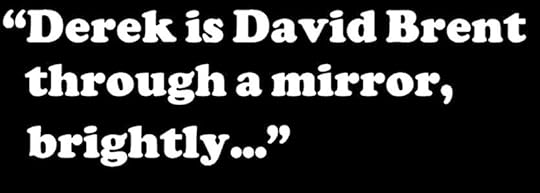 The episodes themselves are perhaps a little thin on plot, though there is an obvious theme at the heart of each that serves as a catalyst for Gervais’s involved character stories (such as the threatened closure of the home, a trip to the library, or even a talent show). The exception is the series’ final episode, which dextrously brings together a couple of clear narrative threads to complete our picture of both Derek the man and Derek the show, and is, I would contend, 2013’s best twenty-odd minutes of television - it’s certainly its most poignant. Gervais’s portrayal of the romance between a deceased resident and her bereaved husband is breathtakingly beautiful, effortlessly cutting through the veil of years to show the audience the couple as they once were, and will always be to each other. My wife’s spent over a decade working with older adults living with dementia, and her thesis was on the hope that those living with the dreadful disease and their loved ones used to fuel themselves, but no matter how many hours of reminiscences she pored over, I don’t think that she ever got quite as positive perspective as Lizzie and Gerald, who get to fall in love again each and every day as if it were the first time. Derek’s own tale of abandonment and reconciliation is almost as heartrending, particularly when its intercut with his musings on forgiveness and humanity, which seem to carry more weight coming from the obviously agenda-free Derek than they would the firm atheist who plays him, or indeed almost anyone else.
The episodes themselves are perhaps a little thin on plot, though there is an obvious theme at the heart of each that serves as a catalyst for Gervais’s involved character stories (such as the threatened closure of the home, a trip to the library, or even a talent show). The exception is the series’ final episode, which dextrously brings together a couple of clear narrative threads to complete our picture of both Derek the man and Derek the show, and is, I would contend, 2013’s best twenty-odd minutes of television - it’s certainly its most poignant. Gervais’s portrayal of the romance between a deceased resident and her bereaved husband is breathtakingly beautiful, effortlessly cutting through the veil of years to show the audience the couple as they once were, and will always be to each other. My wife’s spent over a decade working with older adults living with dementia, and her thesis was on the hope that those living with the dreadful disease and their loved ones used to fuel themselves, but no matter how many hours of reminiscences she pored over, I don’t think that she ever got quite as positive perspective as Lizzie and Gerald, who get to fall in love again each and every day as if it were the first time. Derek’s own tale of abandonment and reconciliation is almost as heartrending, particularly when its intercut with his musings on forgiveness and humanity, which seem to carry more weight coming from the obviously agenda-free Derek than they would the firm atheist who plays him, or indeed almost anyone else.
 The Blu-ray’s extra content is, ironically, more consistently funny than the melancholy sitcom that it supplements. The twenty-minute behind-the-scenes feature took me back to the good ol’ days of The Ricky Gervais Show podcasts, built as it is around debutant telly actor Karl Pilkington’s musings on everything from acting techniques (he seems to genuinely think that he’s invented the method) to the “jigsaw” shooting schedules that go hand in hand with episodic television. You also get a decent selection of deleted scenes for your money, and a few bloopers too, many of them featuring the renowned Mr Pilkington at the height of his loveable idiocy.
The Blu-ray’s extra content is, ironically, more consistently funny than the melancholy sitcom that it supplements. The twenty-minute behind-the-scenes feature took me back to the good ol’ days of The Ricky Gervais Show podcasts, built as it is around debutant telly actor Karl Pilkington’s musings on everything from acting techniques (he seems to genuinely think that he’s invented the method) to the “jigsaw” shooting schedules that go hand in hand with episodic television. You also get a decent selection of deleted scenes for your money, and a few bloopers too, many of them featuring the renowned Mr Pilkington at the height of his loveable idiocy.“Shame more people aren’t like that, really,” Hannah says in the pilot, and these sentiments resonate throughout the whole series. Derek is David Brent through a mirror, brightly; a painfully honest Peter Pan for the modern era. He’s a little boy who never really grew up, who isn’t concerned by opinions and artifice, who thinks that a headlock is a “strong cuddle” and that the world would be a whole lot nicer if people were just kind to each other.
Disabled? More like free.
Derek is only presently available to own in 1080p HD on Blu-ray. The cheapest online retailer today is Amazon , where the disc can be bought for £12.32 with free delivery. Frustratingly, iTunes only offer the series in standard-definition, and without any bonus material or the pilot episode, and for almost as much!
Published on February 15, 2014 04:23
January 19, 2014
First-hand Fitness #1 | On Mass (or "How I Learned to Stop Worrying and Defecating in the Woods")
Those who read my review of the MyFitnessPal app will be familiar with my personal history. For the benefit of those who haven’t, following the birth of my daughter and the onset of psoriatic arthritis, I cut back on the heavy cardio exercise that had kept me slim for more than a decade and began to pile on a bit of podge. It may have only been confined to the cheeks and the midriff, but I could see that I was on a slippery slope and so, last January, vowed to not just regain but surpass my pre-2011 levels of fitness. I’m now a year on, a fair bit fitter and stronger and a hell of a lot wiser, and the purpose of this piece is to share what I’ve learnt. There is so much contradiction in print and online, no doubt borne of the differences in individuals’ lifestyles and genetics, but this is what’s working for me, and if you don’t know much about human biology beyond the oft-repeated myths you might find this quite sobering.
 It’s been drilled into me since youth that a person’s weight is governed by their caloric intake and energy burn alone. My dad, an incredibly thin man who still runs five miles daily despite being only months away from his seventieth birthday, still regales all who’ll listen with tales of the vast quantities that he’s seen people eat, particularly on the frequent all-inclusive cruises that he and my mum take around the Med. The incredulity in his eyes as he describes his fellow passengers’ portions is truly something to behold - it’s halfway been revulsion and envy. He’s just as quick to wax lyrical about what he feels is their pandemic lethargy, often launching into monologues that vividly describe holidaymakers sat around troughing all day long as he - quite literally - runs around them on the deck in his hand-me-down sneakers. And to a certain extent, my old man’s quite right. If your only concern is maintaining that weathered, skeletal look favoured amongst septuagenarians, eating little and exercising a lot is going to work for you; it can’t not. Whatever your unique bone density, metabolic rate or even thyroid activity levels, if you can somehow create a negative balance (burn off more than you put in) then you’ll lose weight. Over time, your metabolism will slow down and your breath will reek, but you definitely won’t get tubby.
It’s been drilled into me since youth that a person’s weight is governed by their caloric intake and energy burn alone. My dad, an incredibly thin man who still runs five miles daily despite being only months away from his seventieth birthday, still regales all who’ll listen with tales of the vast quantities that he’s seen people eat, particularly on the frequent all-inclusive cruises that he and my mum take around the Med. The incredulity in his eyes as he describes his fellow passengers’ portions is truly something to behold - it’s halfway been revulsion and envy. He’s just as quick to wax lyrical about what he feels is their pandemic lethargy, often launching into monologues that vividly describe holidaymakers sat around troughing all day long as he - quite literally - runs around them on the deck in his hand-me-down sneakers. And to a certain extent, my old man’s quite right. If your only concern is maintaining that weathered, skeletal look favoured amongst septuagenarians, eating little and exercising a lot is going to work for you; it can’t not. Whatever your unique bone density, metabolic rate or even thyroid activity levels, if you can somehow create a negative balance (burn off more than you put in) then you’ll lose weight. Over time, your metabolism will slow down and your breath will reek, but you definitely won’t get tubby.
The trouble is, I don’t want to be skinny - the geek-chic look is so 2006. But then I don’t want to look like a no-neck Sontaran either. I’m gunning for that elusive, lean-but-muscular ‘Men’s Health’ physique. And getting it, unfortunately, isn’t as simple as eating less and moving more. In fact, it’s perhaps the most complicated thing that I’ve ever attempted to do, short of building a LEGO Death Star.
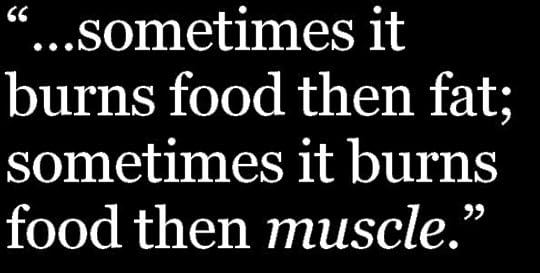 Part of my initial difficulty was down to ignorance. For years I have fundamentally misunderstood how my body works, and even once I’d read countless books and articles on the matter, it wasn’t until I put the matter to my own pseudo-scientific test that I actually started to put some stock in the terrible truth. I’d always understood - well, assumed - that whenever doing high-impact cardiovascular training, my body burns food first, then fat. But when reading up on the subject, it seems that it ain’t necessarily so: sometimes it burns food then fat; sometimes it burns food then muscle. Essentially, it draws on anything that it can to maintain the requisite energy output. As such, whilst high-impact cardio is great for losing weight across the board, many experts posit that it can actually be counter-productive if you’re looking to burn fat but maintain or build muscle as I am. At best, you’re killing some of your gains.
Part of my initial difficulty was down to ignorance. For years I have fundamentally misunderstood how my body works, and even once I’d read countless books and articles on the matter, it wasn’t until I put the matter to my own pseudo-scientific test that I actually started to put some stock in the terrible truth. I’d always understood - well, assumed - that whenever doing high-impact cardiovascular training, my body burns food first, then fat. But when reading up on the subject, it seems that it ain’t necessarily so: sometimes it burns food then fat; sometimes it burns food then muscle. Essentially, it draws on anything that it can to maintain the requisite energy output. As such, whilst high-impact cardio is great for losing weight across the board, many experts posit that it can actually be counter-productive if you’re looking to burn fat but maintain or build muscle as I am. At best, you’re killing some of your gains.
For most of 2013 I trained with as heavy weights as I could handle on Saturdays or Sundays, Tuesdays and Thursdays for sixty to eighty minutes, and did a lot of cardio on the other three weekdays (eight miles’ running, six or seven miles’ very brisk walking). I weighed myself and measured my body fat most mornings, looking for trends, and body fat was invariably higher on a morning after a heavy cardio day, leading me to conclude that, in my case at least, my body probably does often sacrifice muscle to meet its incredible energy demands. This obviously became something of an obstacle when it came to me gaining some decent mass - even when consuming as many as 4000kcal (gross) every day, my lean weight was only just being maintained over most weeks; some weeks it actually fell. My brother’s solution was to consume around 600g of slow-burning carbohydrates throughout the daytime along with the requisite protein (my eight-mile run finished the day as it was how I got home from work) to meet the demand before the event and thus safeguard the muscle. I tried this once and ended up having to take a shit in the woods at around the seven-mile mark, by which point I’d already long-since decided that the practicalities of this plan hadn’t been fully thought through, having waddled at a snail’s pace through town and out into the countryside, farting all the way.
Consequently, for the last six weeks of 2013 I decided to go all-out with a “dirty bulk-up”. Whilst I didn’t give up on cardio entirely, burning as many as 700kcal some days through walking alone (according to Runtastic Pro), I did cut out running, saving my body not only the 1000 or so calories that it had become accustomed to burning three times per week, but some of the muscle that had been regularly set fire to too. On 4th October 2013 I weighed in at 11st dead (154lbs, or 70kg); by 6th January 2014 I was 12st 2lbs (170lbs, or 77kg) and my metabolism was like a furnace. Inevitably my body fat had risen (from around 11% to a portly 16.1%), but my lean weight increased dramatically too, and by the time I’d finished I’d hit all of my strength / performance goals and was ready to set some new ones.
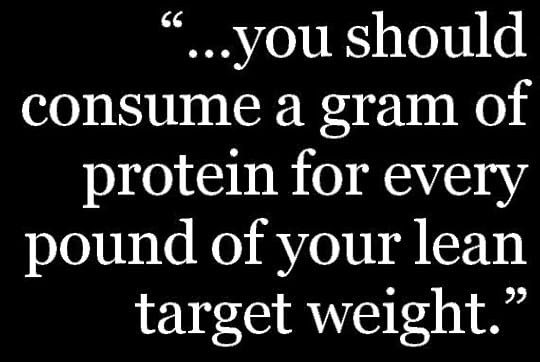 Just as important as learning how my body fuels itself was learning how to properly fuel it. One widespread myth that does seem to hold true is that you should consume a gram of protein for every pound of your lean target weight. This is far above the recommended daily allowance for adult men, yet still way below what many looking to bulk-up consume. Of course, the type and quality of protein is important - as much as I love my soy-based veggie products, they don’t seem to have the same effect as meat and whey, and some papers I’ve read fret over their “feminising” attributes. My pecs have certainly firmed up since switching to chicken and lean minced beef (with all its natural creatine) as primary protein sources.
Just as important as learning how my body fuels itself was learning how to properly fuel it. One widespread myth that does seem to hold true is that you should consume a gram of protein for every pound of your lean target weight. This is far above the recommended daily allowance for adult men, yet still way below what many looking to bulk-up consume. Of course, the type and quality of protein is important - as much as I love my soy-based veggie products, they don’t seem to have the same effect as meat and whey, and some papers I’ve read fret over their “feminising” attributes. My pecs have certainly firmed up since switching to chicken and lean minced beef (with all its natural creatine) as primary protein sources.
 However, whilst this “one gram to one pound” protein myth seems to hold up, society’s rampant anti-carbohydrate mindset certainly doesn’t. For several months my carbohydrate intake was nothing like sufficient to keep me going, let alone achieve muscular hypotrophy, no matter how hard I trained or how much protein I consumed. I was unwittingly on an almost Atkins-like diet, and a result I shed pounds and pounds of fat and got slimmer than ever, but I wasn’t putting on much beef. Having been bombarded with marketing for protein supplements, I thought that if I ate nothing but chicken, Quorn and whey I’d be ripping through my shirts in no time, but my protein-heavy diet was like trying to build a wall with a ton of bricks but no hands. You see, carbohydrates are vital in muscle-building - they provide the necessary fuel for your body to use the protein to repair and rebuild your gym-damaged muscles; the carbs lay the protein bricks, as it were. For weeks I wasn’t even getting enough to keep a regular bloke going, let alone one doing my level of exercise and looking to create a positive balance. Yet almost as soon as I increased the carbs, not only did I finally start to pack on the poundage, but I also experienced an obvious, yet naïvely unexpected, surge in energy. The amount I was lifting increased dramatically over just a few weeks and I felt, well, good.
However, whilst this “one gram to one pound” protein myth seems to hold up, society’s rampant anti-carbohydrate mindset certainly doesn’t. For several months my carbohydrate intake was nothing like sufficient to keep me going, let alone achieve muscular hypotrophy, no matter how hard I trained or how much protein I consumed. I was unwittingly on an almost Atkins-like diet, and a result I shed pounds and pounds of fat and got slimmer than ever, but I wasn’t putting on much beef. Having been bombarded with marketing for protein supplements, I thought that if I ate nothing but chicken, Quorn and whey I’d be ripping through my shirts in no time, but my protein-heavy diet was like trying to build a wall with a ton of bricks but no hands. You see, carbohydrates are vital in muscle-building - they provide the necessary fuel for your body to use the protein to repair and rebuild your gym-damaged muscles; the carbs lay the protein bricks, as it were. For weeks I wasn’t even getting enough to keep a regular bloke going, let alone one doing my level of exercise and looking to create a positive balance. Yet almost as soon as I increased the carbs, not only did I finally start to pack on the poundage, but I also experienced an obvious, yet naïvely unexpected, surge in energy. The amount I was lifting increased dramatically over just a few weeks and I felt, well, good.
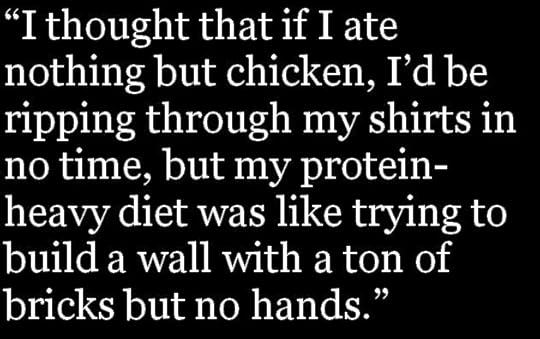 At the end of my bulk-up though, particularly with all the nutrition-free excesses of Christmas, I’d actually exceeded my initial goal weight (the upper echelons of my height’s ideal BMI) and was looking to literally trim the fat. Now I hadn’t seriously reduced my caloric intake in years - I don’t drink alcohol at all anymore and, save for in my arthritis-enforced year off running, all that dashing about I did swiftly put paid to any fat from excess grub. This time, though, I didn’t dare to run on dramatically-reduced calories as I’d have probably lost some muscle with the fat, and in no time at all found myself back where I first began. So, like a reluctant fatty straight from Dr Jessen’s clinic, I jumped from several thousand net calories per day to just 1,800, and even those had to be protein-heavy and spread over six “meals” (meals my arse!) to try to mitigate the inevitable non-fat losses. It was horrible. I was fucking starving.
At the end of my bulk-up though, particularly with all the nutrition-free excesses of Christmas, I’d actually exceeded my initial goal weight (the upper echelons of my height’s ideal BMI) and was looking to literally trim the fat. Now I hadn’t seriously reduced my caloric intake in years - I don’t drink alcohol at all anymore and, save for in my arthritis-enforced year off running, all that dashing about I did swiftly put paid to any fat from excess grub. This time, though, I didn’t dare to run on dramatically-reduced calories as I’d have probably lost some muscle with the fat, and in no time at all found myself back where I first began. So, like a reluctant fatty straight from Dr Jessen’s clinic, I jumped from several thousand net calories per day to just 1,800, and even those had to be protein-heavy and spread over six “meals” (meals my arse!) to try to mitigate the inevitable non-fat losses. It was horrible. I was fucking starving.
And in addition to cutting down on my food intake, I had to make it clear to my body that it shouldn’t even think about burning any of its hard-won muscle to keep me ticking over. I laboured a lot over whether to opt for the commonly-favoured “high reps (12-15+), lighter weights” workouts in favour of my normal regime as I’ve read some very persuasive articles advising against it. Some say that lower weights have only fallen into favour as no sod can lift heavy weights when they’re not properly fuelled, and that this “easy option” will do little, if anything, to preserve your muscle; all you’ll improve is your endurance. Indeed, they even posit that if you decrease your weights, your body won’t think that it needs all its muscle and will promptly set fire to some - the only way to maintain what you’ve got is to actually keep pushing for overload and progression. Others dismiss this as utter madness: if you wear down your muscles with a workout, but don’t build them back up again with enough food afterwards, then you’ve lost the muscle anyway. To a layman like me, both schools of thought seem to have some logic - not to mention a few gaping holes.
 Eventually I elected to go for the generally-pushed soft option for my first five days of fat-cutting. I kept my weights at level where I could crack out 16+ reps on everything, and made sure that my workout was restricted to one hellish, intense hour. The results were okay - I shed around four pounds and hadn’t lost too much muscle (it’s hard to be precise over such a short period when using fancy electro-pulse scales or even callipers, but crucially my vital statistics didn’t budge) - nonetheless to hedge my bets I reverted to my usual heavy training circuit for day six, upping my gross caloric intake to 4000kcal for that day to (a) lessen the risk of not fully building the muscle back up; (b) remind my body that isn’t starving, just in case it was thinking about slowing that raging metabolism down in an attempt to defend its current weight; (c) keep me sane and functioning. I was pleased to find that I was just as strong as I had been a week earlier, if not a little more so. For day seven, I stuck to 4000 well-balanced, muscle-repairing net calories again, before repeating the cycle for week two. Now I’m back to eating loads (of good stuff), lifting loads and running occasionally, which is slowly but surely eradicating the last visible traces of the extra fat I gained in my bulk-up without destroying my gains. Of course, it would no doubt be possible for me to get ripped in six weeks or so if I went on an “alligator and ostrich” Made in Chelsea crash course, but as someone who has a life and a wife and a two-year-old daughter (not to mention local supermarket staff who look aghast whenever asked for alligator meat), the most crucial thing for me is workability. And, whilst the above might sound terribly complicated, it fits in with my work and childcare duties with very little effort - the real challenge is doing it affordably, which is what I’ll turn my attention to in the next instalment of First-hand Fitness.
Eventually I elected to go for the generally-pushed soft option for my first five days of fat-cutting. I kept my weights at level where I could crack out 16+ reps on everything, and made sure that my workout was restricted to one hellish, intense hour. The results were okay - I shed around four pounds and hadn’t lost too much muscle (it’s hard to be precise over such a short period when using fancy electro-pulse scales or even callipers, but crucially my vital statistics didn’t budge) - nonetheless to hedge my bets I reverted to my usual heavy training circuit for day six, upping my gross caloric intake to 4000kcal for that day to (a) lessen the risk of not fully building the muscle back up; (b) remind my body that isn’t starving, just in case it was thinking about slowing that raging metabolism down in an attempt to defend its current weight; (c) keep me sane and functioning. I was pleased to find that I was just as strong as I had been a week earlier, if not a little more so. For day seven, I stuck to 4000 well-balanced, muscle-repairing net calories again, before repeating the cycle for week two. Now I’m back to eating loads (of good stuff), lifting loads and running occasionally, which is slowly but surely eradicating the last visible traces of the extra fat I gained in my bulk-up without destroying my gains. Of course, it would no doubt be possible for me to get ripped in six weeks or so if I went on an “alligator and ostrich” Made in Chelsea crash course, but as someone who has a life and a wife and a two-year-old daughter (not to mention local supermarket staff who look aghast whenever asked for alligator meat), the most crucial thing for me is workability. And, whilst the above might sound terribly complicated, it fits in with my work and childcare duties with very little effort - the real challenge is doing it affordably, which is what I’ll turn my attention to in the next instalment of First-hand Fitness.
 It’s been drilled into me since youth that a person’s weight is governed by their caloric intake and energy burn alone. My dad, an incredibly thin man who still runs five miles daily despite being only months away from his seventieth birthday, still regales all who’ll listen with tales of the vast quantities that he’s seen people eat, particularly on the frequent all-inclusive cruises that he and my mum take around the Med. The incredulity in his eyes as he describes his fellow passengers’ portions is truly something to behold - it’s halfway been revulsion and envy. He’s just as quick to wax lyrical about what he feels is their pandemic lethargy, often launching into monologues that vividly describe holidaymakers sat around troughing all day long as he - quite literally - runs around them on the deck in his hand-me-down sneakers. And to a certain extent, my old man’s quite right. If your only concern is maintaining that weathered, skeletal look favoured amongst septuagenarians, eating little and exercising a lot is going to work for you; it can’t not. Whatever your unique bone density, metabolic rate or even thyroid activity levels, if you can somehow create a negative balance (burn off more than you put in) then you’ll lose weight. Over time, your metabolism will slow down and your breath will reek, but you definitely won’t get tubby.
It’s been drilled into me since youth that a person’s weight is governed by their caloric intake and energy burn alone. My dad, an incredibly thin man who still runs five miles daily despite being only months away from his seventieth birthday, still regales all who’ll listen with tales of the vast quantities that he’s seen people eat, particularly on the frequent all-inclusive cruises that he and my mum take around the Med. The incredulity in his eyes as he describes his fellow passengers’ portions is truly something to behold - it’s halfway been revulsion and envy. He’s just as quick to wax lyrical about what he feels is their pandemic lethargy, often launching into monologues that vividly describe holidaymakers sat around troughing all day long as he - quite literally - runs around them on the deck in his hand-me-down sneakers. And to a certain extent, my old man’s quite right. If your only concern is maintaining that weathered, skeletal look favoured amongst septuagenarians, eating little and exercising a lot is going to work for you; it can’t not. Whatever your unique bone density, metabolic rate or even thyroid activity levels, if you can somehow create a negative balance (burn off more than you put in) then you’ll lose weight. Over time, your metabolism will slow down and your breath will reek, but you definitely won’t get tubby.The trouble is, I don’t want to be skinny - the geek-chic look is so 2006. But then I don’t want to look like a no-neck Sontaran either. I’m gunning for that elusive, lean-but-muscular ‘Men’s Health’ physique. And getting it, unfortunately, isn’t as simple as eating less and moving more. In fact, it’s perhaps the most complicated thing that I’ve ever attempted to do, short of building a LEGO Death Star.
 Part of my initial difficulty was down to ignorance. For years I have fundamentally misunderstood how my body works, and even once I’d read countless books and articles on the matter, it wasn’t until I put the matter to my own pseudo-scientific test that I actually started to put some stock in the terrible truth. I’d always understood - well, assumed - that whenever doing high-impact cardiovascular training, my body burns food first, then fat. But when reading up on the subject, it seems that it ain’t necessarily so: sometimes it burns food then fat; sometimes it burns food then muscle. Essentially, it draws on anything that it can to maintain the requisite energy output. As such, whilst high-impact cardio is great for losing weight across the board, many experts posit that it can actually be counter-productive if you’re looking to burn fat but maintain or build muscle as I am. At best, you’re killing some of your gains.
Part of my initial difficulty was down to ignorance. For years I have fundamentally misunderstood how my body works, and even once I’d read countless books and articles on the matter, it wasn’t until I put the matter to my own pseudo-scientific test that I actually started to put some stock in the terrible truth. I’d always understood - well, assumed - that whenever doing high-impact cardiovascular training, my body burns food first, then fat. But when reading up on the subject, it seems that it ain’t necessarily so: sometimes it burns food then fat; sometimes it burns food then muscle. Essentially, it draws on anything that it can to maintain the requisite energy output. As such, whilst high-impact cardio is great for losing weight across the board, many experts posit that it can actually be counter-productive if you’re looking to burn fat but maintain or build muscle as I am. At best, you’re killing some of your gains. For most of 2013 I trained with as heavy weights as I could handle on Saturdays or Sundays, Tuesdays and Thursdays for sixty to eighty minutes, and did a lot of cardio on the other three weekdays (eight miles’ running, six or seven miles’ very brisk walking). I weighed myself and measured my body fat most mornings, looking for trends, and body fat was invariably higher on a morning after a heavy cardio day, leading me to conclude that, in my case at least, my body probably does often sacrifice muscle to meet its incredible energy demands. This obviously became something of an obstacle when it came to me gaining some decent mass - even when consuming as many as 4000kcal (gross) every day, my lean weight was only just being maintained over most weeks; some weeks it actually fell. My brother’s solution was to consume around 600g of slow-burning carbohydrates throughout the daytime along with the requisite protein (my eight-mile run finished the day as it was how I got home from work) to meet the demand before the event and thus safeguard the muscle. I tried this once and ended up having to take a shit in the woods at around the seven-mile mark, by which point I’d already long-since decided that the practicalities of this plan hadn’t been fully thought through, having waddled at a snail’s pace through town and out into the countryside, farting all the way.
Consequently, for the last six weeks of 2013 I decided to go all-out with a “dirty bulk-up”. Whilst I didn’t give up on cardio entirely, burning as many as 700kcal some days through walking alone (according to Runtastic Pro), I did cut out running, saving my body not only the 1000 or so calories that it had become accustomed to burning three times per week, but some of the muscle that had been regularly set fire to too. On 4th October 2013 I weighed in at 11st dead (154lbs, or 70kg); by 6th January 2014 I was 12st 2lbs (170lbs, or 77kg) and my metabolism was like a furnace. Inevitably my body fat had risen (from around 11% to a portly 16.1%), but my lean weight increased dramatically too, and by the time I’d finished I’d hit all of my strength / performance goals and was ready to set some new ones.
 Just as important as learning how my body fuels itself was learning how to properly fuel it. One widespread myth that does seem to hold true is that you should consume a gram of protein for every pound of your lean target weight. This is far above the recommended daily allowance for adult men, yet still way below what many looking to bulk-up consume. Of course, the type and quality of protein is important - as much as I love my soy-based veggie products, they don’t seem to have the same effect as meat and whey, and some papers I’ve read fret over their “feminising” attributes. My pecs have certainly firmed up since switching to chicken and lean minced beef (with all its natural creatine) as primary protein sources.
Just as important as learning how my body fuels itself was learning how to properly fuel it. One widespread myth that does seem to hold true is that you should consume a gram of protein for every pound of your lean target weight. This is far above the recommended daily allowance for adult men, yet still way below what many looking to bulk-up consume. Of course, the type and quality of protein is important - as much as I love my soy-based veggie products, they don’t seem to have the same effect as meat and whey, and some papers I’ve read fret over their “feminising” attributes. My pecs have certainly firmed up since switching to chicken and lean minced beef (with all its natural creatine) as primary protein sources.
 However, whilst this “one gram to one pound” protein myth seems to hold up, society’s rampant anti-carbohydrate mindset certainly doesn’t. For several months my carbohydrate intake was nothing like sufficient to keep me going, let alone achieve muscular hypotrophy, no matter how hard I trained or how much protein I consumed. I was unwittingly on an almost Atkins-like diet, and a result I shed pounds and pounds of fat and got slimmer than ever, but I wasn’t putting on much beef. Having been bombarded with marketing for protein supplements, I thought that if I ate nothing but chicken, Quorn and whey I’d be ripping through my shirts in no time, but my protein-heavy diet was like trying to build a wall with a ton of bricks but no hands. You see, carbohydrates are vital in muscle-building - they provide the necessary fuel for your body to use the protein to repair and rebuild your gym-damaged muscles; the carbs lay the protein bricks, as it were. For weeks I wasn’t even getting enough to keep a regular bloke going, let alone one doing my level of exercise and looking to create a positive balance. Yet almost as soon as I increased the carbs, not only did I finally start to pack on the poundage, but I also experienced an obvious, yet naïvely unexpected, surge in energy. The amount I was lifting increased dramatically over just a few weeks and I felt, well, good.
However, whilst this “one gram to one pound” protein myth seems to hold up, society’s rampant anti-carbohydrate mindset certainly doesn’t. For several months my carbohydrate intake was nothing like sufficient to keep me going, let alone achieve muscular hypotrophy, no matter how hard I trained or how much protein I consumed. I was unwittingly on an almost Atkins-like diet, and a result I shed pounds and pounds of fat and got slimmer than ever, but I wasn’t putting on much beef. Having been bombarded with marketing for protein supplements, I thought that if I ate nothing but chicken, Quorn and whey I’d be ripping through my shirts in no time, but my protein-heavy diet was like trying to build a wall with a ton of bricks but no hands. You see, carbohydrates are vital in muscle-building - they provide the necessary fuel for your body to use the protein to repair and rebuild your gym-damaged muscles; the carbs lay the protein bricks, as it were. For weeks I wasn’t even getting enough to keep a regular bloke going, let alone one doing my level of exercise and looking to create a positive balance. Yet almost as soon as I increased the carbs, not only did I finally start to pack on the poundage, but I also experienced an obvious, yet naïvely unexpected, surge in energy. The amount I was lifting increased dramatically over just a few weeks and I felt, well, good.  At the end of my bulk-up though, particularly with all the nutrition-free excesses of Christmas, I’d actually exceeded my initial goal weight (the upper echelons of my height’s ideal BMI) and was looking to literally trim the fat. Now I hadn’t seriously reduced my caloric intake in years - I don’t drink alcohol at all anymore and, save for in my arthritis-enforced year off running, all that dashing about I did swiftly put paid to any fat from excess grub. This time, though, I didn’t dare to run on dramatically-reduced calories as I’d have probably lost some muscle with the fat, and in no time at all found myself back where I first began. So, like a reluctant fatty straight from Dr Jessen’s clinic, I jumped from several thousand net calories per day to just 1,800, and even those had to be protein-heavy and spread over six “meals” (meals my arse!) to try to mitigate the inevitable non-fat losses. It was horrible. I was fucking starving.
At the end of my bulk-up though, particularly with all the nutrition-free excesses of Christmas, I’d actually exceeded my initial goal weight (the upper echelons of my height’s ideal BMI) and was looking to literally trim the fat. Now I hadn’t seriously reduced my caloric intake in years - I don’t drink alcohol at all anymore and, save for in my arthritis-enforced year off running, all that dashing about I did swiftly put paid to any fat from excess grub. This time, though, I didn’t dare to run on dramatically-reduced calories as I’d have probably lost some muscle with the fat, and in no time at all found myself back where I first began. So, like a reluctant fatty straight from Dr Jessen’s clinic, I jumped from several thousand net calories per day to just 1,800, and even those had to be protein-heavy and spread over six “meals” (meals my arse!) to try to mitigate the inevitable non-fat losses. It was horrible. I was fucking starving.And in addition to cutting down on my food intake, I had to make it clear to my body that it shouldn’t even think about burning any of its hard-won muscle to keep me ticking over. I laboured a lot over whether to opt for the commonly-favoured “high reps (12-15+), lighter weights” workouts in favour of my normal regime as I’ve read some very persuasive articles advising against it. Some say that lower weights have only fallen into favour as no sod can lift heavy weights when they’re not properly fuelled, and that this “easy option” will do little, if anything, to preserve your muscle; all you’ll improve is your endurance. Indeed, they even posit that if you decrease your weights, your body won’t think that it needs all its muscle and will promptly set fire to some - the only way to maintain what you’ve got is to actually keep pushing for overload and progression. Others dismiss this as utter madness: if you wear down your muscles with a workout, but don’t build them back up again with enough food afterwards, then you’ve lost the muscle anyway. To a layman like me, both schools of thought seem to have some logic - not to mention a few gaping holes.
 Eventually I elected to go for the generally-pushed soft option for my first five days of fat-cutting. I kept my weights at level where I could crack out 16+ reps on everything, and made sure that my workout was restricted to one hellish, intense hour. The results were okay - I shed around four pounds and hadn’t lost too much muscle (it’s hard to be precise over such a short period when using fancy electro-pulse scales or even callipers, but crucially my vital statistics didn’t budge) - nonetheless to hedge my bets I reverted to my usual heavy training circuit for day six, upping my gross caloric intake to 4000kcal for that day to (a) lessen the risk of not fully building the muscle back up; (b) remind my body that isn’t starving, just in case it was thinking about slowing that raging metabolism down in an attempt to defend its current weight; (c) keep me sane and functioning. I was pleased to find that I was just as strong as I had been a week earlier, if not a little more so. For day seven, I stuck to 4000 well-balanced, muscle-repairing net calories again, before repeating the cycle for week two. Now I’m back to eating loads (of good stuff), lifting loads and running occasionally, which is slowly but surely eradicating the last visible traces of the extra fat I gained in my bulk-up without destroying my gains. Of course, it would no doubt be possible for me to get ripped in six weeks or so if I went on an “alligator and ostrich” Made in Chelsea crash course, but as someone who has a life and a wife and a two-year-old daughter (not to mention local supermarket staff who look aghast whenever asked for alligator meat), the most crucial thing for me is workability. And, whilst the above might sound terribly complicated, it fits in with my work and childcare duties with very little effort - the real challenge is doing it affordably, which is what I’ll turn my attention to in the next instalment of First-hand Fitness.
Eventually I elected to go for the generally-pushed soft option for my first five days of fat-cutting. I kept my weights at level where I could crack out 16+ reps on everything, and made sure that my workout was restricted to one hellish, intense hour. The results were okay - I shed around four pounds and hadn’t lost too much muscle (it’s hard to be precise over such a short period when using fancy electro-pulse scales or even callipers, but crucially my vital statistics didn’t budge) - nonetheless to hedge my bets I reverted to my usual heavy training circuit for day six, upping my gross caloric intake to 4000kcal for that day to (a) lessen the risk of not fully building the muscle back up; (b) remind my body that isn’t starving, just in case it was thinking about slowing that raging metabolism down in an attempt to defend its current weight; (c) keep me sane and functioning. I was pleased to find that I was just as strong as I had been a week earlier, if not a little more so. For day seven, I stuck to 4000 well-balanced, muscle-repairing net calories again, before repeating the cycle for week two. Now I’m back to eating loads (of good stuff), lifting loads and running occasionally, which is slowly but surely eradicating the last visible traces of the extra fat I gained in my bulk-up without destroying my gains. Of course, it would no doubt be possible for me to get ripped in six weeks or so if I went on an “alligator and ostrich” Made in Chelsea crash course, but as someone who has a life and a wife and a two-year-old daughter (not to mention local supermarket staff who look aghast whenever asked for alligator meat), the most crucial thing for me is workability. And, whilst the above might sound terribly complicated, it fits in with my work and childcare duties with very little effort - the real challenge is doing it affordably, which is what I’ll turn my attention to in the next instalment of First-hand Fitness.
Published on January 19, 2014 12:55
January 9, 2014
Star Wars LEGO Review | 75020 Jabba's Sail Barge
 The last couple of years have seen Jabba the Hutt’s stock go up considerably in LEGO terms. After years of existence as only a dull green lump of plastic inside a flimsy, hand-me-down palace or absurdly-expensive second-hand sail barge, he’s finally been given texture and form inside a meticulous, sand-washed world comprised of four separate but companionable sets. The most recent of these to see release was 2013’s Jabba’s Sail Barge, which I found myself unwrapping on Christmas Day, having bought it in a Toys Я Us September sale and then given it to my wife to surprise me with on 25th December.
The last couple of years have seen Jabba the Hutt’s stock go up considerably in LEGO terms. After years of existence as only a dull green lump of plastic inside a flimsy, hand-me-down palace or absurdly-expensive second-hand sail barge, he’s finally been given texture and form inside a meticulous, sand-washed world comprised of four separate but companionable sets. The most recent of these to see release was 2013’s Jabba’s Sail Barge, which I found myself unwrapping on Christmas Day, having bought it in a Toys Я Us September sale and then given it to my wife to surprise me with on 25th December. 
Whilst it boasts only around seventy pieces more than the slightly-longer 2006 superset (set #6210), which also included the Sarclaac pit and a desert skiff, this 43cm incarnation of the anti-luxury liner boasts a finish that’s much sleeker and more detailed than its predecessor, finally brining it in line with the quality of the recent Return of the Jedi-themed releases. Its Jabba megafigure is identical to the one released with Jabba’s Palace, which of course means that it impresses both aesthetically and when it comes to playability too. I was more excited about getting my hands on the elephantine musician known to Star Warsenthusiasts as Max Rebo though, as I believe that this is his first appearance in LEGO form. And with his uniquely-moulded headpiece (which has his trademark bulbous proboscis and almost cute lop ears) he does not disappoint. The three-eyed, gun-toting Ree-Yees is almost as distinctive, and again I don’t recall him ever being made available as a LEGO minifigure prior to this set’s release. Accompanying them is a bald Weequay clearly in Jabba’s employ, and R2-D2, who this time comes with a bespoke encumbrance that allows him to serve a few drinks to Jabba’s cronies before supplying Luke with his emergency lightsaber.

One of the most startling omissions from the Jabba’s Palace set was Princess Leia in her legendary gold bikini – what Dorling Kindersley’s LEGO Star Wars Character Encyclopediadescribes, somewhat playfully, as “Demure Princess Leia” – who found herself dropped in favour of a Leia styled in her pre-bondage Ubese bounty hunter getup. However, this set finally provides us with Leia in all her glory, her reversible headpiece having been updated to contemporary standards and even her posterior showing new definition. She also comes with shackles capable of binding her to her Hutt captor, which is a particularly nice touch as it allows young builders to restage the movie’s garroting of the vile gangster.

The vehicle itself has been cleverly redesigned to allow easier access to its innards. In this iteration, its deck lifts off and both its sides fold out, allowing even the largest of hands inside to place Jabba on his deathbed; lock Leia away in the holding cell; or even put Max or Artoo to work in the grubby kitchen. In fact, there’s so much space available above and below deck that you’ll need to draft in minifigures from sister sets to make the barge look shipshape. I’d especially recommend lining it up with the Desert Skiff set, which many contend should have formed part of this set as it did #6210.

Something that really surprised me about this model was its robustness. Equipped with well-hidden wheels that allow it to navigate the laminate as easy as the real thing could the Jundland Wastes or the Great Pit of Carkoon, the finished craft survived more than twenty minutes in the hands of my two-year-old, who found it far more stimulating than her age-appropriate Christmas DUPLO. Even after twenty minutes, the only breakages to speak of were the pulled-off sheet-plastic sails, which were easily reattached. Even the peek-a-boo windows (with their vulnerable stickers…) survived countless openings and closures.

A fine addition to the Hutt criminal cartel, and indeed the larger world of Star Wars LEGO, this shorter, sleeker and more detailed vision of Jabba’s infamous barge is guaranteed to light the imagination of anyone from playing child to ageing geek.
The Star Wars LEGO Jabba’s Sail Barge is available from LEGO directly for £99.99 with free delivery. Today's cheapest online retailer though is Youngworld Toys, who are currently selling this set for £94.99 plus £3.99 delivery (£97.99 overall).
Published on January 09, 2014 07:57
December 29, 2013
Star Wars LEGO Review | 75003 A-wing Starfighter
 Whilst I’m not generally a big sales shopper, an impromptu post-soft play visit to Sainsbury’s recently yielded a rare bargain for me in the shape of LEGO’s 2013 A-wing Starfighter. Though not a set that was on my hit list, with its £24.99 RRP slashed in half it was worth the cost for its impressive compliment of minifigures alone.
Whilst I’m not generally a big sales shopper, an impromptu post-soft play visit to Sainsbury’s recently yielded a rare bargain for me in the shape of LEGO’s 2013 A-wing Starfighter. Though not a set that was on my hit list, with its £24.99 RRP slashed in half it was worth the cost for its impressive compliment of minifigures alone.For me, the main attraction here is the rare and highly sought-after Admiral Ackbar. Until this Return of the Jedi-themed set hit the shelves, the high-ranking Mon Calamari had only been made available in 2009’s limited edition Home One Mon Calamari Star Cruiser set (#7754), and even then at significant expense. For that reason, until now I’ve always used my Nahdar Vebb minifigure, which shares the same bespoke headpiece as the Rebel fleet’s supreme commander, to utter that immortal phrase, “It’s a trap!”, when recreating the Battle of Endor in LEGO form, but now I’ve finally got the admiral in uniform, albeit relaxed enough to be enjoying a cup of space tea.
 His accompanying A-wing pilot may not be quite as central to the Star Wars saga, but as admirals generally don’t fly starfighters into action, he’s indispensible to this set, and welcome in my collection in any event as my Rebel troops are woefully thin on the ground when measured against my LEGO Empire. His appearance here marks the first time that the A-wing helmet has featured in any LEGO Star Wars set, and he also boasts a reversible headpiece (see right) that suggests he might be intended to be Arvel Crynyd, who famously took out Darth Vader’s Executor in the spectacular, suicidal dive that spearheaded the original trilogy’s cinematic climax.
His accompanying A-wing pilot may not be quite as central to the Star Wars saga, but as admirals generally don’t fly starfighters into action, he’s indispensible to this set, and welcome in my collection in any event as my Rebel troops are woefully thin on the ground when measured against my LEGO Empire. His appearance here marks the first time that the A-wing helmet has featured in any LEGO Star Wars set, and he also boasts a reversible headpiece (see right) that suggests he might be intended to be Arvel Crynyd, who famously took out Darth Vader’s Executor in the spectacular, suicidal dive that spearheaded the original trilogy’s cinematic climax.The inclusion of Han Solo, whose attire has been tweaked again just enough to warrant the block-capitals “NEW!” on the front of the box, is similarly welcome, although as he was down on the forest moon while Ackbar was leading the attack on the Death Star to which this set pays homage, he does feel a little redundant. Personally I’d have preferred to get Mon Mothma (another #7754-exclusive) or, better still, a plain-clothes Lando (that you still can’t get for love nor money). At least if, like me, you own the recent Jabba’s Palace set, you can just stick its Lando’s headpiece on this latest Han’s body, and voila!
The 177-piece ship itself impresses with its sturdiness. Save for its comparatively-flimsy landing gear, it’s 19 x 14cm frame is solid enough to survive being hurled at the bridge of my Executor repeatedly (which is more than can be said of my Executor). It also has some cool features, including the obligatory flick missiles and a more spacious cockpit than I would have expected, though how LEGO can list its “removable engine” as a feature eludes me – it’s LEGO; everything’s removable! It’s not the prettiest of starfighters either; short and stunted, it lacks the elegance of the longer and sleeker ships deployed throughout the Clone Wars or the natural beauty of X-wings. For £12.49 though, it’s nonetheless a remarkable bargain, if not a belated Christmas gift.
The Star Wars LEGO A-wing Starfighter is available from LEGO directly for £24.99 with free delivery. Today’s cheapest retailer though is Sainsbury’s, where it has been reduced to £12.49.
Published on December 29, 2013 15:01
December 24, 2013
UK Christmas Countdown Deals
 Until midnight on Boxing Day in the UK, my children’s e-book, Supersize vs Superskinny Santa, will be available to download from Amazon's Kindle Store for just 99p (almost 50% less than its RRP).
Until midnight on Boxing Day in the UK, my children’s e-book, Supersize vs Superskinny Santa, will be available to download from Amazon's Kindle Store for just 99p (almost 50% less than its RRP).Those aged over five years may wish to check out my much more grown-up novel, The Tally, which, from Christmas Day until the year’s end, will also be on offer on Amazon's Kindle Store, this time with a whopping 75% off its RRP. The now-deleted paperback edition has also had its price slashed on Amazon if you’ve yet to go digital when it comes to your reading.
Supersize vs Superskinny Santa
Illustrated by Jemma Brown
Rudolph’s not had an easy life. Mercilessly mocked by his surprisingly mean-spirited peers for having a cosmetic nasal defect, he went on to carve out a place for himself in history by using his iridescent nose to guide Santa Claus through weather conditions that other reindeers couldn’t. But that wouldn’t be the end of his troubles.
As the years have worn on, Santa has become a slave to food and drink. He’s obese, indolent and selfish, and now his alcoholic corpulence threatens Christmas itself.
Can Rudolph help Santa to drop enough weight to fit down chimneys before it’s too late? Or will children the world over wake up on Christmas Day to find that Santa hasn’t been?
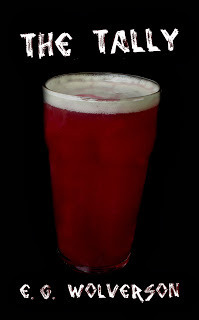 The Tally
The Tally
(A Dark Tale of Danger and Diesel for the Student Loan Generation)
Welcome to the Student Bubble.
Welcome to a world where the DJs play the same songs in the same order every single night, and the one (and only) hit wonder reigns supreme. Welcome to a world of crude cartoon and misplaced melodrama; a world free of all but the most trifling of consequences, where exaggerated sensitivity is rife and a semester’s success or suicide hangs on the whim of a woman.
Young Tommo wiles away his evenings in a purple drunken stupor, lost to the tender mercies of what he desperately wishes was a hopeless love affair, but in reality isn’t even that. Gristle, meanwhile, is enraged when his weak-bladdered housemate Spadge moves out, only to be replaced by a neurotic freak named Jamal, who dares not only to bring books into his house, but to read them too.
And for poor Will, matters are even worse. Women are staying in of a night! How’s he supposed to rack up his ‘tally’ of conquests if women daren’t leave their digs? They’re all terrified that they’ll be the next to fall prey to the invisible menace that has started stealing students away from the streets of Hull. Will has nothing to fear though – after all, he has his recently arrived destitute father to watch his back. And the fearsome Gristle. And the zealously neurotic Jamal. And the dangerously depressed Tom…
The Student Bubble is about to burst, and when it does, the degenerate residents of 146 Worthington Street will find themselves drowning in a reality that they’re not equipped to comprehend, let alone survive in.
Published on December 24, 2013 05:58
December 23, 2013
TV Review | The Second Coming written by Russell T Davies
Having brought homosexuality to prime time with his acclaimed series Queer as Folk, a little over a decade ago Stephen Russell Davies – better known to the masses by his nom de plume, Russell T Davies – decided that he was going to stir the pot some more by breaking an even bigger taboo. What could get people talking more than a show about three archetypal gay men hanging around Canal Street in the ’90s? Well, short of bringing back Doctor Who, you’d have to resurrect Jesus Christ.
And so that’s exactly what he did – in the guise of a twat from Manchester.

 Commissioning a writer as contentious as Davies to pen a drama that even dabbles in spiritual matters, let alone take Christianity’s messiah in a direction that, at best, isn’t going to sit all that well with his flock, suggests that ITV were looking for either trouble or ratings - or, perhaps, both. Having been reared on images of beards and sandals, most Christians probably don’t picture Christopher Eccleston’s “daft old face” when they think of their saviour, and I’m even more confident that they don’t imagine him telling priests to “piss off” and necking pints. Indeed, at a first glance, The Second Coming seems intent on inflaming the channel’s Christian demographic, but, as is invariably the case with a Davies script, it’s ultimately far cleverer than its initial shock tactics imply.
Commissioning a writer as contentious as Davies to pen a drama that even dabbles in spiritual matters, let alone take Christianity’s messiah in a direction that, at best, isn’t going to sit all that well with his flock, suggests that ITV were looking for either trouble or ratings - or, perhaps, both. Having been reared on images of beards and sandals, most Christians probably don’t picture Christopher Eccleston’s “daft old face” when they think of their saviour, and I’m even more confident that they don’t imagine him telling priests to “piss off” and necking pints. Indeed, at a first glance, The Second Coming seems intent on inflaming the channel’s Christian demographic, but, as is invariably the case with a Davies script, it’s ultimately far cleverer than its initial shock tactics imply.
What Davies does with The Second Coming is little different from what Steven Moffat and Mark Gatiss have done more recently with Sherlock – he’s taken an old story and updated it for the 21st century. Of course, popular though they are, the works of Sir Arthur Conan Doyle haven’t had anything like the same effect on two millennia of worldwide culture as the canon of the New Testament has, but the principle is still essentially the same. As the story was originally told, Jesus of Nazareth was born of a virgin mother; this time around, he’s the son of a dad who shoots blanks. Back in the day, Jesus broke bread with his buddies before one of them called in the Romans to drag him off to martyrdom; in Davies’ follow-up, the last supper becomes spag bol in the kitchen, and that old rugged cross is replaced with a quicker and more violent means of departure that’s much more in keeping with the fast and furious pace of 2003. As told by the gospels, Jesus spent years practising carpentry before answering his calling; Davies’ script has Steve toiling away in a video shop until an epiphany borne of a kiss sends him scurrying for the moors, all but driven insane by his newly-awoken divinity.

Where the narratives begin to diverge is in how their respective sons of God go about saving humanity’s endangered souls. As this is more of a sequel than a reimagining (albeit one that we can safely say is “not canon” in the truest sense of the phrase – more Christ Unbound), Steve’s been Jesus once and learnt his lessons well. Accordingly, there’s no softly, softly from our Mr Baxter this time around: he tells the world to furnish him with a “Third Testament”, a book that must change humanity’s course forever, or else it’s the proverbial “End of Days”.
Now even though this is more of a fact than a threat, this sounds much more like the Old Testament’s no-nonsense God than it does the New Testament’s gentler God the Son, but the devil is in the detail. Eccleston’s Christ.2 is blighted by the mind of a moron; imagine Karl Pilkington, swap the “head like a fucking orange” for big ears, remove the spite and that’s our Steve - a hapless Northern nobody, suddenly imbued with a holiness that he’s just slightly too thick to fully master. Throughout, the viewer gets the sense that Steve isn’t quite getting the full message from God – his brain hasn’t got the requisite bandwidth for the download, to misquote a metaphor from the script – which makes him vulnerable but terrifying at the same time as we watch him fudge the world towards an apocalypse. This is the man upon whom the fate of not just the world, but Heaven and Hell too, turns. It’s a sympathetic and mesmerising yet deeply terrifying performance, with hindsight eerily evocative of Eccleston’s Doctor in Doctor Who in spirit, if not in intellect.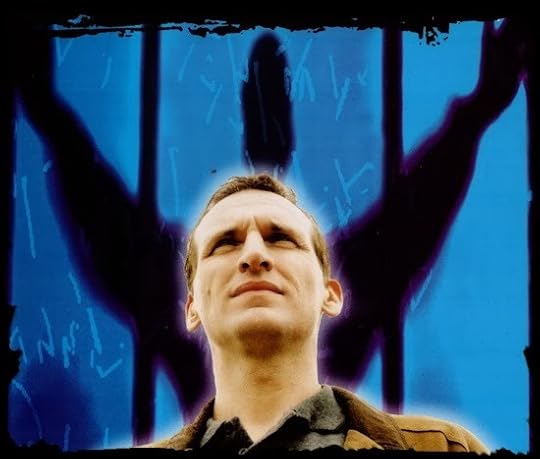
Almost, if not equally, gripping is Lesley Sharp’s Jude – Steve’s unrequited crush and greatest sceptic. The Second Coming is her story, really, as it’s through her that we see a kiss transform Steve from an ordinary idiot into an Almighty one; through her that we see Steve’s radical actions start to tear the world apart; through her that we witness the real implications of the second coming, for is God is real, then so is Satan. From the first episode’s opening scene to the second’s cold and final one, Sharp anchors the tale to the mundane world that we all know, making the madness of the second coming feel all the more real; all the more frightening. Indeed, I don’t recall ever watching anything that’s so unsettling on such a basic, psychological level as this two-part serial is.
 The supporting cast is just as impressive, comprising a veritable who’s who of British television, including Mark Benton (illustrious Auton victim, star of countless Nationwide ads and recent Strictly Come Dancing contestant); Annabelle Apsion (Shameless); Ace Bhatti (The Sarah Jane Adventures); and even Kevin Webster’s dad off Coronation Street, who damned near steals the show with his sinister second-episode performance. Just as extraordinary is Adrian Shergold’s direction, which despite being constrained by a television budget feels consciously cinematic, particularly with set pieces like the defining “Maine Road miracle” and the first episode’s explosive cliffhanger.
The supporting cast is just as impressive, comprising a veritable who’s who of British television, including Mark Benton (illustrious Auton victim, star of countless Nationwide ads and recent Strictly Come Dancing contestant); Annabelle Apsion (Shameless); Ace Bhatti (The Sarah Jane Adventures); and even Kevin Webster’s dad off Coronation Street, who damned near steals the show with his sinister second-episode performance. Just as extraordinary is Adrian Shergold’s direction, which despite being constrained by a television budget feels consciously cinematic, particularly with set pieces like the defining “Maine Road miracle” and the first episode’s explosive cliffhanger.
 But The Second Coming’s greatest strength is much more abstract than its spectacle. Unlike most dramas, it has an ability to make people who don’t often turn their mind to such things consider their place in creation, whether they want to or not. Even watching The Second Coming through the eyes of an agnostic who puts no stock in any religion (morally laudable and duly comforting though they all may be), it’s hard not to be taken aback by the sheer weight of the subject matter, particularly when it’s delivered with such candid fervour. The line, “You stupid people. It’s finally happened. Heaven’s empty. And Hell’s bursting at the seams,” for instance, is one of the bleakest things that I’ve heard; it implies that we’re so lost, so hollow, so morally bankrupt that everyone who’s ever lived, even the very best of us, either couldn’t hack it Heaven or didn’t get an invite to start with.
But The Second Coming’s greatest strength is much more abstract than its spectacle. Unlike most dramas, it has an ability to make people who don’t often turn their mind to such things consider their place in creation, whether they want to or not. Even watching The Second Coming through the eyes of an agnostic who puts no stock in any religion (morally laudable and duly comforting though they all may be), it’s hard not to be taken aback by the sheer weight of the subject matter, particularly when it’s delivered with such candid fervour. The line, “You stupid people. It’s finally happened. Heaven’s empty. And Hell’s bursting at the seams,” for instance, is one of the bleakest things that I’ve heard; it implies that we’re so lost, so hollow, so morally bankrupt that everyone who’s ever lived, even the very best of us, either couldn’t hack it Heaven or didn’t get an invite to start with.
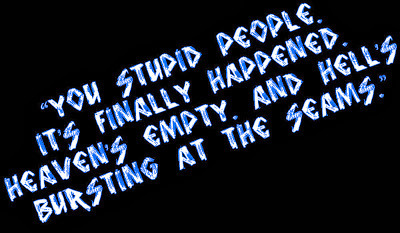 Such abject worthlessness is admittedly buoyed by the drama’s conclusion, however, which serves as more of a grim counterpoint to the resurrection first described in the letters of Paul rather than it is a refashioning of it. Whilst I’m sure that those of a religious persuasion, any religious persuasion, will balk at Davies’ Klingon-inspired ending, which sees the final closure of “the family business”, I prefer to see it as the ultimate vote of confidence in humanity rather than an ultimate denunciation of it. The world that survives Judgement Day is full of people that have to stand on their own; work hard to fix their own problems; and, most importantly, focus on the pain and pleasures of their one short life rather than waste it preparing for the next. But a writer of Davies’ calibre is smart enough not to push his own atheist views too hard, as to do so would have ultimately defeated The Second Coming’s mission to provoke even debate. Instead, the second episode’s final moments rouse a burning doubt in the viewer - its final conversation is palpably flat; there’s a pause, an evasion, a strong implication that the world is somehow emptier without religion in it, and it’s up to the viewer to form his or her own view. It even left me with a knot in my gut, not so much for my own sake, but for the sakes of those like Johnny Tyler, who have nothing in this world and could only look to the next - until now.
Such abject worthlessness is admittedly buoyed by the drama’s conclusion, however, which serves as more of a grim counterpoint to the resurrection first described in the letters of Paul rather than it is a refashioning of it. Whilst I’m sure that those of a religious persuasion, any religious persuasion, will balk at Davies’ Klingon-inspired ending, which sees the final closure of “the family business”, I prefer to see it as the ultimate vote of confidence in humanity rather than an ultimate denunciation of it. The world that survives Judgement Day is full of people that have to stand on their own; work hard to fix their own problems; and, most importantly, focus on the pain and pleasures of their one short life rather than waste it preparing for the next. But a writer of Davies’ calibre is smart enough not to push his own atheist views too hard, as to do so would have ultimately defeated The Second Coming’s mission to provoke even debate. Instead, the second episode’s final moments rouse a burning doubt in the viewer - its final conversation is palpably flat; there’s a pause, an evasion, a strong implication that the world is somehow emptier without religion in it, and it’s up to the viewer to form his or her own view. It even left me with a knot in my gut, not so much for my own sake, but for the sakes of those like Johnny Tyler, who have nothing in this world and could only look to the next - until now.
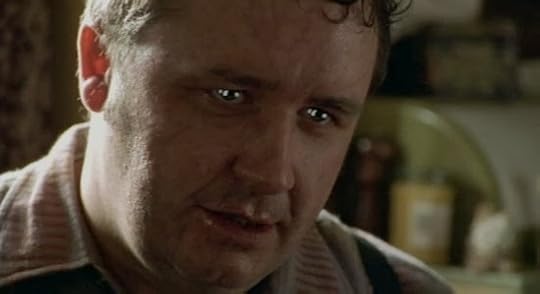
Thought-provoking, chilling and occasionally surprisingly comic, The Second Coming is one of the boldest dramas of the naughty noughties, not to mention one of the most fair and frank treatises on religion that have ever found their way onto television. If you’ve had enough of Father Christmas already and fancy dipping a toe in the more sacred side of the season, then I’d highly recommend tracking down this DVD and giving your soul a stir. At less than four quid, it’s cheaper than some Christmas cards and a damned sight more fulfilling.
The Second Coming is currently only available on DVD. The cheapest online retailer is Play, where it can be purchased for just £3.84.
And so that’s exactly what he did – in the guise of a twat from Manchester.

 Commissioning a writer as contentious as Davies to pen a drama that even dabbles in spiritual matters, let alone take Christianity’s messiah in a direction that, at best, isn’t going to sit all that well with his flock, suggests that ITV were looking for either trouble or ratings - or, perhaps, both. Having been reared on images of beards and sandals, most Christians probably don’t picture Christopher Eccleston’s “daft old face” when they think of their saviour, and I’m even more confident that they don’t imagine him telling priests to “piss off” and necking pints. Indeed, at a first glance, The Second Coming seems intent on inflaming the channel’s Christian demographic, but, as is invariably the case with a Davies script, it’s ultimately far cleverer than its initial shock tactics imply.
Commissioning a writer as contentious as Davies to pen a drama that even dabbles in spiritual matters, let alone take Christianity’s messiah in a direction that, at best, isn’t going to sit all that well with his flock, suggests that ITV were looking for either trouble or ratings - or, perhaps, both. Having been reared on images of beards and sandals, most Christians probably don’t picture Christopher Eccleston’s “daft old face” when they think of their saviour, and I’m even more confident that they don’t imagine him telling priests to “piss off” and necking pints. Indeed, at a first glance, The Second Coming seems intent on inflaming the channel’s Christian demographic, but, as is invariably the case with a Davies script, it’s ultimately far cleverer than its initial shock tactics imply.What Davies does with The Second Coming is little different from what Steven Moffat and Mark Gatiss have done more recently with Sherlock – he’s taken an old story and updated it for the 21st century. Of course, popular though they are, the works of Sir Arthur Conan Doyle haven’t had anything like the same effect on two millennia of worldwide culture as the canon of the New Testament has, but the principle is still essentially the same. As the story was originally told, Jesus of Nazareth was born of a virgin mother; this time around, he’s the son of a dad who shoots blanks. Back in the day, Jesus broke bread with his buddies before one of them called in the Romans to drag him off to martyrdom; in Davies’ follow-up, the last supper becomes spag bol in the kitchen, and that old rugged cross is replaced with a quicker and more violent means of departure that’s much more in keeping with the fast and furious pace of 2003. As told by the gospels, Jesus spent years practising carpentry before answering his calling; Davies’ script has Steve toiling away in a video shop until an epiphany borne of a kiss sends him scurrying for the moors, all but driven insane by his newly-awoken divinity.

Where the narratives begin to diverge is in how their respective sons of God go about saving humanity’s endangered souls. As this is more of a sequel than a reimagining (albeit one that we can safely say is “not canon” in the truest sense of the phrase – more Christ Unbound), Steve’s been Jesus once and learnt his lessons well. Accordingly, there’s no softly, softly from our Mr Baxter this time around: he tells the world to furnish him with a “Third Testament”, a book that must change humanity’s course forever, or else it’s the proverbial “End of Days”.
Now even though this is more of a fact than a threat, this sounds much more like the Old Testament’s no-nonsense God than it does the New Testament’s gentler God the Son, but the devil is in the detail. Eccleston’s Christ.2 is blighted by the mind of a moron; imagine Karl Pilkington, swap the “head like a fucking orange” for big ears, remove the spite and that’s our Steve - a hapless Northern nobody, suddenly imbued with a holiness that he’s just slightly too thick to fully master. Throughout, the viewer gets the sense that Steve isn’t quite getting the full message from God – his brain hasn’t got the requisite bandwidth for the download, to misquote a metaphor from the script – which makes him vulnerable but terrifying at the same time as we watch him fudge the world towards an apocalypse. This is the man upon whom the fate of not just the world, but Heaven and Hell too, turns. It’s a sympathetic and mesmerising yet deeply terrifying performance, with hindsight eerily evocative of Eccleston’s Doctor in Doctor Who in spirit, if not in intellect.

Almost, if not equally, gripping is Lesley Sharp’s Jude – Steve’s unrequited crush and greatest sceptic. The Second Coming is her story, really, as it’s through her that we see a kiss transform Steve from an ordinary idiot into an Almighty one; through her that we see Steve’s radical actions start to tear the world apart; through her that we witness the real implications of the second coming, for is God is real, then so is Satan. From the first episode’s opening scene to the second’s cold and final one, Sharp anchors the tale to the mundane world that we all know, making the madness of the second coming feel all the more real; all the more frightening. Indeed, I don’t recall ever watching anything that’s so unsettling on such a basic, psychological level as this two-part serial is.
 The supporting cast is just as impressive, comprising a veritable who’s who of British television, including Mark Benton (illustrious Auton victim, star of countless Nationwide ads and recent Strictly Come Dancing contestant); Annabelle Apsion (Shameless); Ace Bhatti (The Sarah Jane Adventures); and even Kevin Webster’s dad off Coronation Street, who damned near steals the show with his sinister second-episode performance. Just as extraordinary is Adrian Shergold’s direction, which despite being constrained by a television budget feels consciously cinematic, particularly with set pieces like the defining “Maine Road miracle” and the first episode’s explosive cliffhanger.
The supporting cast is just as impressive, comprising a veritable who’s who of British television, including Mark Benton (illustrious Auton victim, star of countless Nationwide ads and recent Strictly Come Dancing contestant); Annabelle Apsion (Shameless); Ace Bhatti (The Sarah Jane Adventures); and even Kevin Webster’s dad off Coronation Street, who damned near steals the show with his sinister second-episode performance. Just as extraordinary is Adrian Shergold’s direction, which despite being constrained by a television budget feels consciously cinematic, particularly with set pieces like the defining “Maine Road miracle” and the first episode’s explosive cliffhanger. But The Second Coming’s greatest strength is much more abstract than its spectacle. Unlike most dramas, it has an ability to make people who don’t often turn their mind to such things consider their place in creation, whether they want to or not. Even watching The Second Coming through the eyes of an agnostic who puts no stock in any religion (morally laudable and duly comforting though they all may be), it’s hard not to be taken aback by the sheer weight of the subject matter, particularly when it’s delivered with such candid fervour. The line, “You stupid people. It’s finally happened. Heaven’s empty. And Hell’s bursting at the seams,” for instance, is one of the bleakest things that I’ve heard; it implies that we’re so lost, so hollow, so morally bankrupt that everyone who’s ever lived, even the very best of us, either couldn’t hack it Heaven or didn’t get an invite to start with.
But The Second Coming’s greatest strength is much more abstract than its spectacle. Unlike most dramas, it has an ability to make people who don’t often turn their mind to such things consider their place in creation, whether they want to or not. Even watching The Second Coming through the eyes of an agnostic who puts no stock in any religion (morally laudable and duly comforting though they all may be), it’s hard not to be taken aback by the sheer weight of the subject matter, particularly when it’s delivered with such candid fervour. The line, “You stupid people. It’s finally happened. Heaven’s empty. And Hell’s bursting at the seams,” for instance, is one of the bleakest things that I’ve heard; it implies that we’re so lost, so hollow, so morally bankrupt that everyone who’s ever lived, even the very best of us, either couldn’t hack it Heaven or didn’t get an invite to start with.  Such abject worthlessness is admittedly buoyed by the drama’s conclusion, however, which serves as more of a grim counterpoint to the resurrection first described in the letters of Paul rather than it is a refashioning of it. Whilst I’m sure that those of a religious persuasion, any religious persuasion, will balk at Davies’ Klingon-inspired ending, which sees the final closure of “the family business”, I prefer to see it as the ultimate vote of confidence in humanity rather than an ultimate denunciation of it. The world that survives Judgement Day is full of people that have to stand on their own; work hard to fix their own problems; and, most importantly, focus on the pain and pleasures of their one short life rather than waste it preparing for the next. But a writer of Davies’ calibre is smart enough not to push his own atheist views too hard, as to do so would have ultimately defeated The Second Coming’s mission to provoke even debate. Instead, the second episode’s final moments rouse a burning doubt in the viewer - its final conversation is palpably flat; there’s a pause, an evasion, a strong implication that the world is somehow emptier without religion in it, and it’s up to the viewer to form his or her own view. It even left me with a knot in my gut, not so much for my own sake, but for the sakes of those like Johnny Tyler, who have nothing in this world and could only look to the next - until now.
Such abject worthlessness is admittedly buoyed by the drama’s conclusion, however, which serves as more of a grim counterpoint to the resurrection first described in the letters of Paul rather than it is a refashioning of it. Whilst I’m sure that those of a religious persuasion, any religious persuasion, will balk at Davies’ Klingon-inspired ending, which sees the final closure of “the family business”, I prefer to see it as the ultimate vote of confidence in humanity rather than an ultimate denunciation of it. The world that survives Judgement Day is full of people that have to stand on their own; work hard to fix their own problems; and, most importantly, focus on the pain and pleasures of their one short life rather than waste it preparing for the next. But a writer of Davies’ calibre is smart enough not to push his own atheist views too hard, as to do so would have ultimately defeated The Second Coming’s mission to provoke even debate. Instead, the second episode’s final moments rouse a burning doubt in the viewer - its final conversation is palpably flat; there’s a pause, an evasion, a strong implication that the world is somehow emptier without religion in it, and it’s up to the viewer to form his or her own view. It even left me with a knot in my gut, not so much for my own sake, but for the sakes of those like Johnny Tyler, who have nothing in this world and could only look to the next - until now.
Thought-provoking, chilling and occasionally surprisingly comic, The Second Coming is one of the boldest dramas of the naughty noughties, not to mention one of the most fair and frank treatises on religion that have ever found their way onto television. If you’ve had enough of Father Christmas already and fancy dipping a toe in the more sacred side of the season, then I’d highly recommend tracking down this DVD and giving your soul a stir. At less than four quid, it’s cheaper than some Christmas cards and a damned sight more fulfilling.
The Second Coming is currently only available on DVD. The cheapest online retailer is Play, where it can be purchased for just £3.84.
Published on December 23, 2013 23:02
December 17, 2013
Desert Island Disc Space #1 | Kaiser Chiefs: The Stronger Than a Powered-up Pac-Man Playlist
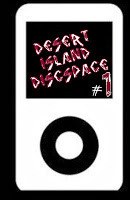 Back in the days when things had substance, when books were made of trees and music was engraved onto vinyl, a popular pastime was to think about which few LPs you’d want with you were you to find yourself bound for an uninhabited island with only a very limited luggage allowance. The digital revolution has left this game largely redundant, however, for as long as you’ve got a smartphone with something like Spotify on it, you could see out your well-tanned days to the sound of pretty much anything you fancy. But what if you couldn’t get a signal...?
Back in the days when things had substance, when books were made of trees and music was engraved onto vinyl, a popular pastime was to think about which few LPs you’d want with you were you to find yourself bound for an uninhabited island with only a very limited luggage allowance. The digital revolution has left this game largely redundant, however, for as long as you’ve got a smartphone with something like Spotify on it, you could see out your well-tanned days to the sound of pretty much anything you fancy. But what if you couldn’t get a signal...?In an effort to home in on my favourite favourites, and then wax lyrical about the same, I’ve set myself a challenge; a modern take on the old ‘desert island discs’ idea. I’m heading for a desert island with only a solar-powered 16GB iPod for company. Assuming my departure is going to be hurried, and I don’t have time to re-encode all my 256-320kbps tracks at lower bitrates to make their files smaller, then how would I fill up that space?

With the recent announcement of their fifth studio album’s release next Easter at the forefront of my mind, my first thoughts were of the Kaiser Chiefs. Ever since they burst onto the scene in 2004, predicting riots while falling out of love inside songs that couldn’t quite decide whether they were pop or punk, the lads from Leeds have been never been off my earphones for long. Their first record, Employment, is still one of my favourite debut albums, and the almighty Yours Truly, Angry Mob is one of my favourite albums full stop, despite its Americanised sign-off (it’s ‘Yours faithfully’ in this neck of the woods). And whilst the Chiefs’ third effort, the more avant-garde Off with Their Heads, doesn’t quite measure up to its outstanding predecessors, it’s still a great album, and one that I’m particularly fond of as I was listening to it a lot around the time that I got married. I have vivid memories of the current Mrs Wolverson reprimanding me for singing along to the opening lines of “Addicted to Drugs” just before we got hitched on holiday. The group’s fourth bountiful collection of songs (‘album’ doesn’t seem appropriate given its unique method of release) I found a little harder to get into, mainly because there were so many tracks to listen to, and it fell to me to separate the ten that I wanted for my unique edition of The Future is Medieval from those better suited to B-sides. The pick ’n’ mix process was ultimately more rewarding though, and indeed many of the most stirring tracks that I chose for my personalised album also appear on my desert island playlist.

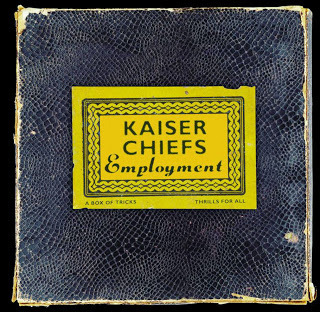 My rundown opens with the extraordinary “My Kind of Guy” - a quite grisly ode to someone “as horrible” as the song’s protagonist. I find that it makes for a great opener as lyrically it serves as a fine example of the band’s penchant for peculiar subject matter, and musically it has a tangible sense of mounting momentum. I follow this with two Employment tracks in a row - a decision that wouldn’t sit well with some of my old ‘mix tape’-making friends, who held to some very peculiar rules about splitting up tracks from any one album or, on various artists compilations, from any one artist. “Everyday I Love You Less and Less” set out the Kaiser Chiefs’ inimitable stall on track one, turning the lovesong on its head in every respect, and to follow it with anything other than anthemic supertrack and preceding single “I Predict a Riot” would be an act as criminal as the insurgence that vocalist Ricky Wilson so tunefully prophesises.
My rundown opens with the extraordinary “My Kind of Guy” - a quite grisly ode to someone “as horrible” as the song’s protagonist. I find that it makes for a great opener as lyrically it serves as a fine example of the band’s penchant for peculiar subject matter, and musically it has a tangible sense of mounting momentum. I follow this with two Employment tracks in a row - a decision that wouldn’t sit well with some of my old ‘mix tape’-making friends, who held to some very peculiar rules about splitting up tracks from any one album or, on various artists compilations, from any one artist. “Everyday I Love You Less and Less” set out the Kaiser Chiefs’ inimitable stall on track one, turning the lovesong on its head in every respect, and to follow it with anything other than anthemic supertrack and preceding single “I Predict a Riot” would be an act as criminal as the insurgence that vocalist Ricky Wilson so tunefully prophesises. But whereas the forty-five-minute Employment could curb its tempo a little for its third track, my two-hour list of tracks needs to maintain its initial push for just a little longer. As such, “I Predict a Riot” dovetails into the equally raucous, and almost equally enjoyable, “Never Miss a Beat”, before getting back into Employment with “Na Na Na Na Na” - a song that, whilst insidiously catchy, I still have absolutely no idea what it’s actually about.
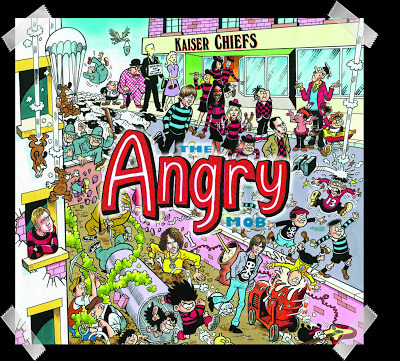 “Everything is Average Nowadays” has for a long time been a favourite of mine from Yours Truly, Angry Mob; partly because I couldn’t agree with its sentiments more (if anything, I’d have gone on to bemoan modern society’s dutiful championing of moderation and balance), partly because it’s a cracking rock song that never lets up. “Kinda Girl You Are” which follows it escaped my own edition of The Future is Medieval, but only because it wasn’t available for selection when I assembled it. Had it been, I’d have built my personalised album around its accessible, rocky-romantic vibe.
“Everything is Average Nowadays” has for a long time been a favourite of mine from Yours Truly, Angry Mob; partly because I couldn’t agree with its sentiments more (if anything, I’d have gone on to bemoan modern society’s dutiful championing of moderation and balance), partly because it’s a cracking rock song that never lets up. “Kinda Girl You Are” which follows it escaped my own edition of The Future is Medieval, but only because it wasn’t available for selection when I assembled it. Had it been, I’d have built my personalised album around its accessible, rocky-romantic vibe. From there, we get to the core of the Chiefs’ extant catalogue with a trilogy of anthems: “Ruby”, “Oh My God” and “The Angry Mob”. As will become more apparent the more of my disc space that I talk about, I’m generally quick to lose interest in super-singles like “Ruby”; singles that everyone knows, everyone plays, everyone tires of. “Ruby” itself, though, is the exception that proves the rule. “Oh My God”, similarly, is one of the band’s most popular tracks and with damned good reason. The debut single captures perfectly and mellifluously those many perceived light years between one’s work and one’s home, particularly if you’re stuck in one of those jobs “in a shirt with your name tag on it, drifting apart like a plate tectonic.” When it came out I was labouring in a call centre somewhere - RWE npower, if memory serves (and I have tried hard to repress it) - and I’d just stopped bloodsucking and got a flat with my now-wife, and so it was as if the song were sung just for me - just like all the best ones. Yours Truly, Angry Mob’s title track is by its nature more impersonal: taking the form of a scathing attack on a tabloid-controlled nation masked as a march to war, it’s a track worthy of Wall-era Pink Floyd.
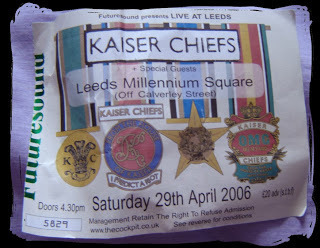 An interesting collaboration with DCypha Productions’ Sway, “Half the Truth” fuses the band’s radio-friendly punk / rock sound with rap, and does so with surprising success. The more I hear it, the more I like it, but I still don’t like it as much as I do the appropriately-bonkers “Highroyds”. I first heard this song when I saw the Kaisers live in Leeds’ Millennium Square in April 2006 (along with a friend who once spent a little time in Highroyds, ironically), and though its lyrics have been watered down for the worse since (when I heard it, it went, “Picked up a girl from Boston Spa, did her on the boot of a car...”), I still love how it evokes both the hollow tests of mettle and utter rubbishness of youth.
An interesting collaboration with DCypha Productions’ Sway, “Half the Truth” fuses the band’s radio-friendly punk / rock sound with rap, and does so with surprising success. The more I hear it, the more I like it, but I still don’t like it as much as I do the appropriately-bonkers “Highroyds”. I first heard this song when I saw the Kaisers live in Leeds’ Millennium Square in April 2006 (along with a friend who once spent a little time in Highroyds, ironically), and though its lyrics have been watered down for the worse since (when I heard it, it went, “Picked up a girl from Boston Spa, did her on the boot of a car...”), I still love how it evokes both the hollow tests of mettle and utter rubbishness of youth.
 “Little Shocks” is the first song on my playlist to really catch its breath. The track opens the version of The Future is Medieval that crystallised on CD, but rather than take the storming approach of the band’s first two albums, it’s more of a tension-building intro; a coiled spring that only briefly unfurls whenever Wilson croons about the derision of his “imaginary dynamo”. I love its lyrics as well as it is sound, particularly its core idea of being unable to devote oneself fully to someone or something - sentiments that I acutely appreciate given the many, many competing demands on my too-short time. Treading similar ground to the Arctic Monkeys’ seminal “Fluorescent Adolescent”, “You Want History” pulls its comfortable “lord of the bored” and “slave to the beige” subject out of his lounge and sends him off for a night on the tiles - a night that he’s now trying to recall. You see, the song’s title isn’t a question - it’s a statement, and its ever-oscillating sound reflects every up and down of his forgotten, intoxicated misadventures. Up next, “Born to Be a Dancer” is one of Employment’s most ambitious efforts, not to mention one of its most successful. A poetic delight, the song tries to get inside the head of a feller whose lover has moved to London to become a stripper - a development that he could probably cope with, if she didn’t bloody love it so much. Each verse is a careful account of the jilted John’s misery, syllables even spilling across beats, but every swelling chorus then serves as a rapid riposte: “Do you know my real answer? I was born to be a dancer.” Brilliant.
“Little Shocks” is the first song on my playlist to really catch its breath. The track opens the version of The Future is Medieval that crystallised on CD, but rather than take the storming approach of the band’s first two albums, it’s more of a tension-building intro; a coiled spring that only briefly unfurls whenever Wilson croons about the derision of his “imaginary dynamo”. I love its lyrics as well as it is sound, particularly its core idea of being unable to devote oneself fully to someone or something - sentiments that I acutely appreciate given the many, many competing demands on my too-short time. Treading similar ground to the Arctic Monkeys’ seminal “Fluorescent Adolescent”, “You Want History” pulls its comfortable “lord of the bored” and “slave to the beige” subject out of his lounge and sends him off for a night on the tiles - a night that he’s now trying to recall. You see, the song’s title isn’t a question - it’s a statement, and its ever-oscillating sound reflects every up and down of his forgotten, intoxicated misadventures. Up next, “Born to Be a Dancer” is one of Employment’s most ambitious efforts, not to mention one of its most successful. A poetic delight, the song tries to get inside the head of a feller whose lover has moved to London to become a stripper - a development that he could probably cope with, if she didn’t bloody love it so much. Each verse is a careful account of the jilted John’s misery, syllables even spilling across beats, but every swelling chorus then serves as a rapid riposte: “Do you know my real answer? I was born to be a dancer.” Brilliant.
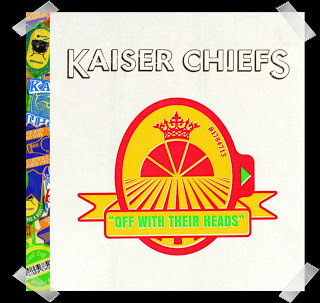 “Getting married in the morning; it’s hardly peaches and cream. We haven’t got a lot in common, except the daily routine...” is the opening refrain not of some dirge for a loveless relationship, but the misleading introduction to what is perhaps the most jubilant ever song about substance dependence. The way that Wilson blithely belts out, “You might as well face it...,” you expect him to end the sentence with, “...that just doesn’t suit you,” or, “...we’re gonna have to work late.” Drug addiction is the last thing conjured by the cheerful beat and backing vocals, or for that matter the litany of little disappointments listed by the lyrics - yet somehow it works.
“Getting married in the morning; it’s hardly peaches and cream. We haven’t got a lot in common, except the daily routine...” is the opening refrain not of some dirge for a loveless relationship, but the misleading introduction to what is perhaps the most jubilant ever song about substance dependence. The way that Wilson blithely belts out, “You might as well face it...,” you expect him to end the sentence with, “...that just doesn’t suit you,” or, “...we’re gonna have to work late.” Drug addiction is the last thing conjured by the cheerful beat and backing vocals, or for that matter the litany of little disappointments listed by the lyrics - yet somehow it works. “Thank You Very Much” has, over time, become my favourite track on the band’s second album. One of the less obvious of the many reflections on the trappings of fame that are out there, its honest lyrics openly give thanks for the group’s fame and fortune, whilst at the same time lamenting the prison of the limelight and remembering how it was “really nice” being “on the other side” of the divide. This ambivalence is reflected in the track’s tempo and tone, which frequently shifts from the measured reason of the verse to the frenzy of the chorus, which is repeated like some self-soothing mantra.
Another often-overlooked gem is “Heard it Break”, a curious little number that uses an electronic beat and calypso to convey a truly beautiful idea: a man who’s heart isn’t broken, this time, but merely sprained. Not that it hurts him any less - in fact, he thinks that it hurts more, “...but they do say a sprain hurts more than a break, or is that just to make you feel better about it?” Another one of The Angry Mob, “I Can Do It Without You” beautifully mourns an unspoken loss; a loss that’s projected onto a changing city skyline rather than tackled head on. For the most part driven by determination, the singer’s resolve finally breaks in a moving, last-minute admission of defeat: “...but it wouldn’t be very good.”
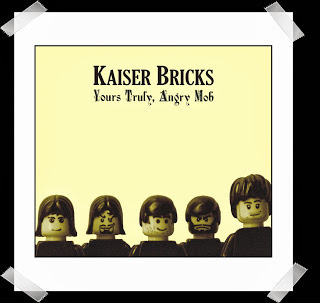 “Listen to Your Head” is one of those annoying ‘best of’-exclusive tracks that you’d have had to also buy fifteen songs that you already own to get your hands on in the days before iTunes. Whilst it probably wouldn’t be worth such expenditure, for £0.99 it’s a lovely little number that knows its role as one of “the million combinations” of words and music out there. “Love’s Not a Competition (But I’m Winning)”, conversely, is well worth the price of an album on its own; it’s right up there with REM’s “The One I Love” as an anti-lovesong for the ages as far as I’m concerned. Presented as a gentle ballad, Wilson sings of points-scoring and trying to get chucked with an eloquence that feels at odds with the subject matter. Balance is duly restored by “You Can Have it All”, a much more conventional romantic number by contrast, though still one that uses similes as extreme as amputation to convey a significant other’s significance. “I’ll tell you what it’s going to feel like...” A haunting piano piece sung by the now-departed Nick Hodgson then caps the playlist’s trilogy of ballads, but rather than focus on the ups and downs of heterosexuality, “Boxing Champ” instead speaks of schoolboy submission; of a weakling youth hardened by the bullying of his boxing champ buddy.
“Listen to Your Head” is one of those annoying ‘best of’-exclusive tracks that you’d have had to also buy fifteen songs that you already own to get your hands on in the days before iTunes. Whilst it probably wouldn’t be worth such expenditure, for £0.99 it’s a lovely little number that knows its role as one of “the million combinations” of words and music out there. “Love’s Not a Competition (But I’m Winning)”, conversely, is well worth the price of an album on its own; it’s right up there with REM’s “The One I Love” as an anti-lovesong for the ages as far as I’m concerned. Presented as a gentle ballad, Wilson sings of points-scoring and trying to get chucked with an eloquence that feels at odds with the subject matter. Balance is duly restored by “You Can Have it All”, a much more conventional romantic number by contrast, though still one that uses similes as extreme as amputation to convey a significant other’s significance. “I’ll tell you what it’s going to feel like...” A haunting piano piece sung by the now-departed Nick Hodgson then caps the playlist’s trilogy of ballads, but rather than focus on the ups and downs of heterosexuality, “Boxing Champ” instead speaks of schoolboy submission; of a weakling youth hardened by the bullying of his boxing champ buddy.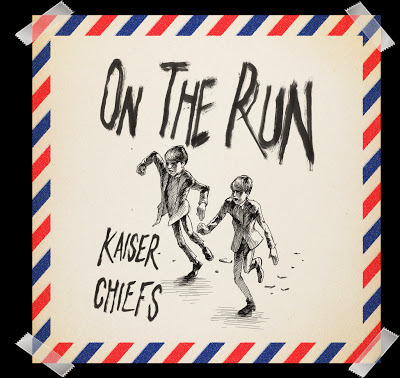 The frenzied, electric interim single “On the Run” kicks the playlist back into first gear as it questions and accuses with an aggression not felt since Yours Truly, Angry Mob. This is followed by “Dead or in Serious Trouble”, a track so utterly Blurry that you’d swear the Kaisers had nicked it off The Great Escape and then forced Damon Albarn to sing it.
The frenzied, electric interim single “On the Run” kicks the playlist back into first gear as it questions and accuses with an aggression not felt since Yours Truly, Angry Mob. This is followed by “Dead or in Serious Trouble”, a track so utterly Blurry that you’d swear the Kaisers had nicked it off The Great Escape and then forced Damon Albarn to sing it. “Like It Too Much” is Off with Their Heads’ utmost triumph. Sometimes I think that it’s about lust, sometimes narcotics (“You get the first one free...”), sometimes cake. As its lyrics highlight humanity’s often-avoided chemical, animal nature, it could well be any or all of those things. “Modern Way”, the final single from Employment, could be either about juggling or regret depending on whether you’re listening to the track or watching the video. Perhaps it’s about both. Another Hodgson-sung track, “Man on Mars” is one of The Future is Medieval’s obvious standouts, its idle languor belying the same sort of discontentment that begat the much louder “Everything is Average Nowadays”. It goes on a bit, mind.
“Saturday Night” has to be one of the most overused song titles of all time, but, free from Whigfield’s synthetic glee or even Suede’s eager-to-please melancholy, the Kaisers’ take on the nation’s favourite smash-up night is far from common. I applaud any song that can use the word “pneumothorax” in its lyrics and get away with it, but even this outdone with a bad sitcom joke that, against all the odds, makes the track sound cooler than it already is. “Retirement” follows, a song that despite its chorus’s unequivocal statement seems to be more concerned with wanting to have retired, and to have made some sort of mark, than it does simply wanting to clock off for the last time. More grandiose with each verse, Wilson makes no bones about wanting to have assured his place in history - something that, by 2007, he already had.
The counter-Beach Boys “Caroline, Yes!” begins the playlist’s slow crawl to climax. With its morose and subdued beat punctuated only with a haunting, artificial whine, the track shows the group at their grimmest, acknowledging inadequacy in what seems to be a lovesong to lover-stealing idol; perhaps even a son. “Try Your Best” is only a little lighter aurally, but it’s more optimistic lyrically, and more inventive too. Few lyricists would have the gall to rhyme ‘see’ with ‘sea’; fewer still would continue the sensory-nautical trickery with “...as far as the ear can hear, the wave is coming loud and clear...”
 “If You Will Have Me” was my first pick for The Future is Medieval, and the first track added to this playlist. It’s a simple song, really, and one that’s more traditional than most of the Kaisers’ catalogue, yet it’s one that I find extraordinary moving despite the odd clumsy line (“...the longest of goodbyes, so many lows and no real highs...”). It sums up everyone’s worst day; that moment when you feel so wretched and defeated that all you want to do is clamber up into that picture of sheltered four-year-old you, only to realise that that world, and those who made it go round, aren’t there anymore.
“If You Will Have Me” was my first pick for The Future is Medieval, and the first track added to this playlist. It’s a simple song, really, and one that’s more traditional than most of the Kaisers’ catalogue, yet it’s one that I find extraordinary moving despite the odd clumsy line (“...the longest of goodbyes, so many lows and no real highs...”). It sums up everyone’s worst day; that moment when you feel so wretched and defeated that all you want to do is clamber up into that picture of sheltered four-year-old you, only to realise that that world, and those who made it go round, aren’t there anymore. 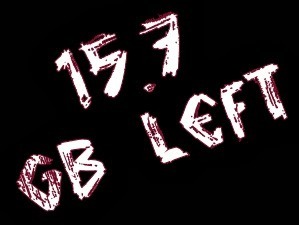 To close by way of an enlivening encore, I must turn to “Time Honoured Tradition” - the only song that I know to extol the virtues of getting your five a day while bluntly outlining the inevitable consequences of “...too much red meat and ale.” You want a three-minute digest of the Kaiser Chiefs, then look no further than this track.
To close by way of an enlivening encore, I must turn to “Time Honoured Tradition” - the only song that I know to extol the virtues of getting your five a day while bluntly outlining the inevitable consequences of “...too much red meat and ale.” You want a three-minute digest of the Kaiser Chiefs, then look no further than this track.All told, I don’t think that my Stronger Than a Powered-up Pac-Man playlist is a controversial rundown by any means; there are no shocking omissions or championed obscurities here. If you want a more thorough souvenir of the group’s first eight years than the sixteen-track singles collection, you could do a lot worse than throw this together while you await Education, Education, Education and War.
Published on December 17, 2013 14:36
Desert Island Discspace #1 | Kaiser Chiefs: The Stronger Than a Powered-up Pac-Man Playlist
 Back in the days when things had substance, when books were made of trees and music was engraved onto vinyl, a popular pastime was to think about which few LPs you’d want with you were you to find yourself bound for an uninhabited island with only a very limited luggage allowance. The digital revolution has left this game largely redundant, however, for as long as you’ve got a smartphone with something like Spotify on it, you could see out your well-tanned days to the sound of pretty much anything you fancy. But what if you couldn’t get a signal...?
Back in the days when things had substance, when books were made of trees and music was engraved onto vinyl, a popular pastime was to think about which few LPs you’d want with you were you to find yourself bound for an uninhabited island with only a very limited luggage allowance. The digital revolution has left this game largely redundant, however, for as long as you’ve got a smartphone with something like Spotify on it, you could see out your well-tanned days to the sound of pretty much anything you fancy. But what if you couldn’t get a signal...?In an effort to hone in on my favourite favourites, and then wax lyrical about the same, I’ve set myself a challenge; a modern take on the old ‘desert island discs’ idea. I’m heading for a desert island with only a solar-powered 16GB iPod for company. Assuming my departure is going to be hurried, and I don’t have time to re-encode all my 256-320kbps tracks at lower bitrates to make their files smaller, then how would I fill up that space?

With the recent announcement of their fifth studio album’s release next Easter at the forefront of my mind, my first thoughts were of the Kaiser Chiefs. Ever since they burst onto the scene in 2004, predicting riots while falling out of love inside songs that couldn’t quite decide whether they were pop or punk, the lads from Leeds have been never been off my earphones for long. Their first record, Employment, is still one of my favourite debut albums, and the almighty Yours Truly, Angry Mob is one of my favourite albums full stop, despite its Americanised sign-off (it’s ‘Yours faithfully’ in this neck of the woods). And whilst the Chiefs’ third effort, the more avant-garde Off with Their Heads, doesn’t quite measure up to its outstanding predecessors, it’s still a great album, and one that I’m particularly fond of as I was listening to it a lot around the time that I got married. I have vivid memories of the current Mrs Wolverson reprimanding me for singing along to the opening lines of “Addicted to Drugs” just before we got hitched on holiday. The group’s fourth bountiful collection of songs (‘album’ doesn’t seem appropriate given its unique method of release) I found a little harder to get into, mainly because there were so many tracks to listen to, and it fell to me to separate the dozen or so that I wanted for my unique edition of The Future is Medieval from those better suited to B-sides. The pick ’n’ mix process was ultimately more rewarding though, and indeed many of the most stirring tracks that I chose for my personalised album also appear on my desert island playlist.

 My rundown opens with the extraordinary “My Kind of Guy” - a quite grisly ode to someone “as horrible” as the song’s protagonist. I find that it makes for a great opener as lyrically it serves as a fine example of the band’s penchant for peculiar subject matter, and musically it has a tangible sense of mounting momentum. I follow this with two Employment tracks in a row - a decision that wouldn’t sit well with some of my old ‘mix tape’-making friends, who held to some very peculiar rules about splitting up tracks from any one album or, on various artists compilations, from any one artist. “Everyday I Love You Less and Less” set out the Kaiser Chiefs’ inimitable stall on track one, turning the lovesong on its head in every respect, and to follow it with anything other than anthemic supertrack and preceding single “I Predict a Riot” would be an act as criminal as the insurgence that vocalist Ricky Wilson so tunefully prophesises.
My rundown opens with the extraordinary “My Kind of Guy” - a quite grisly ode to someone “as horrible” as the song’s protagonist. I find that it makes for a great opener as lyrically it serves as a fine example of the band’s penchant for peculiar subject matter, and musically it has a tangible sense of mounting momentum. I follow this with two Employment tracks in a row - a decision that wouldn’t sit well with some of my old ‘mix tape’-making friends, who held to some very peculiar rules about splitting up tracks from any one album or, on various artists compilations, from any one artist. “Everyday I Love You Less and Less” set out the Kaiser Chiefs’ inimitable stall on track one, turning the lovesong on its head in every respect, and to follow it with anything other than anthemic supertrack and preceding single “I Predict a Riot” would be an act as criminal as the insurgence that vocalist Ricky Wilson so tunefully prophesises. But whereas the forty-five-minute Employment could curb its tempo for its third track, my two-hour list of tracks needs to maintain its initial push for just a little longer. As such, “I Predict a Riot” dovetails into the equally raucous, and almost equally enjoyable, “Never Miss a Beat”, before getting back into Employment with “Na Na Na Na Na” - a song that, whilst insidiously catchy, I still have absolutely no idea what it’s actually about.
 “Everything is Average Nowadays” has for a long time been a favourite of mine from Yours Truly, Angry Mob; partly because I couldn’t agree with its sentiments more (if anything, I’d have gone on to bemoan modern society’s dutiful championing of moderation and balance), partly because it’s a cracking rock song that never lets up. “Kinda Girl You Are” which follows it escaped my own edition of The Future is Medieval, but only because it wasn’t available for selection when I assembled it. Had it been, I’d have built my personalised album around its incessant, accessible, rocky-romantic vibe.
“Everything is Average Nowadays” has for a long time been a favourite of mine from Yours Truly, Angry Mob; partly because I couldn’t agree with its sentiments more (if anything, I’d have gone on to bemoan modern society’s dutiful championing of moderation and balance), partly because it’s a cracking rock song that never lets up. “Kinda Girl You Are” which follows it escaped my own edition of The Future is Medieval, but only because it wasn’t available for selection when I assembled it. Had it been, I’d have built my personalised album around its incessant, accessible, rocky-romantic vibe. From there, we get to the core of the Chiefs’ extant catalogue with a trilogy of anthems: “Ruby”, “Oh My God” and “The Angry Mob”. As will become more apparent the more of my disc space that I talk about, I’m generally quick to lose interest in super-singles like “Ruby”; singles that everyone knows, everyone plays, everyone tires of. “Ruby” itself, though, is the exception that proves the rule. “Oh My God”, similarly, is one of the band’s most popular tracks and with damned good reason. The debut single captures perfectly and mellifluously those many perceived light years between one’s work and one’s home, particularly if you’re stuck in one of those jobs “in a shirt with your name tag on it, drifting apart like a plate tectonic.” When it came out I was labouring in a call centre somewhere - nPower, if memory serves (and I have tried hard to repress it), and I’d just stopped bloodsucking and got a flat with my now-wife, and it was as if the song were sung for me - just like all the best ones. Yours Truly, Angry Mob’s title track is by its nature more impersonal: taking the form of a scathing attack on a tabloid-controlled nation masked as a march to war, it’s a track worthy of Wall-era Pink Floyd.
 Off with Their Heads. An interesting collaboration with DCypha Productions’ Sway, the track fuses the band’s radio-friendly punk/rock sound with rap, and does so with surprising success. The more I hear it, the more I like it, but I still don’t like it as much as I do the appropriately-bonkers “Highroyds”. I first heard this song when I saw the Kaisers live in Leeds’ Millennium Square in April 2006 (along with a friend once sectioned in Highroyds, ironically!), and though its lyrics have been watered down for the worse since (when I heard it, it went, “Picked up a girl from Boston Spa, did her on the boot of a car...”), I still love how it evokes both the hollow tests of mettle and utter rubbishness of youth.
Off with Their Heads. An interesting collaboration with DCypha Productions’ Sway, the track fuses the band’s radio-friendly punk/rock sound with rap, and does so with surprising success. The more I hear it, the more I like it, but I still don’t like it as much as I do the appropriately-bonkers “Highroyds”. I first heard this song when I saw the Kaisers live in Leeds’ Millennium Square in April 2006 (along with a friend once sectioned in Highroyds, ironically!), and though its lyrics have been watered down for the worse since (when I heard it, it went, “Picked up a girl from Boston Spa, did her on the boot of a car...”), I still love how it evokes both the hollow tests of mettle and utter rubbishness of youth.
 “Little Shocks” is the first song on my playlist to really catch its breath. The track opens the final version of The Future is Medieval that crystallised on CD, but rather than take the storming approach of the band’s first two albums, it’s more of a tension-building intro; a coiled spring that only briefly unfurls whenever Wilson croons about the derision of his “imaginary dynamo”. I love its lyrics as well as it is sound, particularly its core idea of being unable to devote oneself fully to someone or something - sentiments that I acutely appreciate given the many, many competing demands on my too-short time. Exploring similar ground to the Arctic Monkey’s seminal “Fluorescent Adolescent”, “You Want History” pulls its comfortable “lord of the bored” and “slave to the beige” subject out of his lounge and sends him off for a night on the tiles - a night that he’s now trying to recall. You see, the song’s title isn’t a question - it’s a statement, and its ever-oscillating sound reflects every up and down of forgotten, intoxicated misadventures. Up next, “Born to Be a Dancer” is one of Employment’s most ambitious efforts, not to mention one of its most successful. A poetic delight, the song tries to get inside the head of a feller whose lover has moved to London to become a stripper - a development that he could probably cope with, if she didn’t bloody love it so much. Each verse is a careful account of the jilted John’s misery, syllables spilling across beats, but every swelling chorus then serves as a rapid riposte: “Do you know my real answer? I was born to be a dancer.” Brilliant.
“Little Shocks” is the first song on my playlist to really catch its breath. The track opens the final version of The Future is Medieval that crystallised on CD, but rather than take the storming approach of the band’s first two albums, it’s more of a tension-building intro; a coiled spring that only briefly unfurls whenever Wilson croons about the derision of his “imaginary dynamo”. I love its lyrics as well as it is sound, particularly its core idea of being unable to devote oneself fully to someone or something - sentiments that I acutely appreciate given the many, many competing demands on my too-short time. Exploring similar ground to the Arctic Monkey’s seminal “Fluorescent Adolescent”, “You Want History” pulls its comfortable “lord of the bored” and “slave to the beige” subject out of his lounge and sends him off for a night on the tiles - a night that he’s now trying to recall. You see, the song’s title isn’t a question - it’s a statement, and its ever-oscillating sound reflects every up and down of forgotten, intoxicated misadventures. Up next, “Born to Be a Dancer” is one of Employment’s most ambitious efforts, not to mention one of its most successful. A poetic delight, the song tries to get inside the head of a feller whose lover has moved to London to become a stripper - a development that he could probably cope with, if she didn’t bloody love it so much. Each verse is a careful account of the jilted John’s misery, syllables spilling across beats, but every swelling chorus then serves as a rapid riposte: “Do you know my real answer? I was born to be a dancer.” Brilliant.
 “Getting married in the morning; it’s hardly peaches and cream. We haven’t got a lot in common, except the daily routine...” is the opening refrain not of some song about a loveless relationship, but the misleading introduction to what is perhaps the most jubilant ever song about substance dependence. The way that Wilson blithely belts out, “You might as well face it...”, you expect him to end the sentence with, “...that just doesn’t suit you,” or, “...we’re gonna have to work late.” Drug addiction is the last thing conjured by the cheerful beat and backing vocals, or for that matter the litany of little disappointments listed by the lyrics - yet somehow it works.
“Getting married in the morning; it’s hardly peaches and cream. We haven’t got a lot in common, except the daily routine...” is the opening refrain not of some song about a loveless relationship, but the misleading introduction to what is perhaps the most jubilant ever song about substance dependence. The way that Wilson blithely belts out, “You might as well face it...”, you expect him to end the sentence with, “...that just doesn’t suit you,” or, “...we’re gonna have to work late.” Drug addiction is the last thing conjured by the cheerful beat and backing vocals, or for that matter the litany of little disappointments listed by the lyrics - yet somehow it works. “Thank You Very Much” has, over time, become my favourite track on the band’s second album. One of the less obvious of the many reflections on the trappings of fame that are out there, the honest lyrics openly give thanks for the group’s fame and fortune, whilst at the same time lamenting the prison of the limelight and remembering how it was “really nice” being “on the other side” of the divide. This ambivalence is reflected in the track’s tempo and tone, which frequently changes from the measured reason of the verse to the frenzy of the chorus, which is repeated like some self-soothing mantra.
Another often-overlooked gem is “Heard it Break”, a curious little number that uses an electronic beat and calypso to convey a truly beautiful idea: a man who’s heart isn’t broken, this time, but merely sprained. Not that it hurts him any less - in fact, he thinks that it hurts more, “...but they do say a sprain hurts more than a break, or is that just to make you feel better about it?” Another one of The Angry Mob, “I Can Do It Without You” beautifully laments an unspoken loss; a loss that’s projected onto a changing city skyline rather than tackled head on. For the most part driven by determination, the singer’s resolve finally breaks in a moving, last-minute admission of defeat: “...but it wouldn’t be very good.”
 “Listen to Your Head” is one of those annoying ‘best of’-exclusive tracks that you’d have had to also buy fifteen songs that you already own to get your hands on in the days before iTunes. Whilst it probably wouldn’t be worth such expenditure, for £0.99 it’s a lovely little number that knows its role as one of “the million combinations” of words and music out there. “Love’s Not a Competition (But I’m Winning)”, conversely, is well worth the price of an album on its own; it’s right up there with REM’s “The One I Love” as an anti-lovesong for the ages as far as I’m concerned. Presented as a gentle ballad, Wilson sings of points-scoring and trying to get chucked with an eloquence that defies expectation. Balance is duly restored by “You Can Have it All”, a much more conventional romantic number by contrast, though still one that uses similes as extreme as amputation to convey a significant other’s significance. “I’ll tell you what it’s going to feel like...” A haunting piano piece sung by the now-departed Nick Hodgson then caps the playlist’s trilogy of ballads, but rather than focus on the ups and downs of heterosexuality, “Boxing Champ” instead speaks of schoolboy submission; of a weakling youth hardened by the bullying of his boxing champ buddy.
“Listen to Your Head” is one of those annoying ‘best of’-exclusive tracks that you’d have had to also buy fifteen songs that you already own to get your hands on in the days before iTunes. Whilst it probably wouldn’t be worth such expenditure, for £0.99 it’s a lovely little number that knows its role as one of “the million combinations” of words and music out there. “Love’s Not a Competition (But I’m Winning)”, conversely, is well worth the price of an album on its own; it’s right up there with REM’s “The One I Love” as an anti-lovesong for the ages as far as I’m concerned. Presented as a gentle ballad, Wilson sings of points-scoring and trying to get chucked with an eloquence that defies expectation. Balance is duly restored by “You Can Have it All”, a much more conventional romantic number by contrast, though still one that uses similes as extreme as amputation to convey a significant other’s significance. “I’ll tell you what it’s going to feel like...” A haunting piano piece sung by the now-departed Nick Hodgson then caps the playlist’s trilogy of ballads, but rather than focus on the ups and downs of heterosexuality, “Boxing Champ” instead speaks of schoolboy submission; of a weakling youth hardened by the bullying of his boxing champ buddy. The frenzied, electric interim single “On the Run” kicks the playlist back into first gear as it questions and accuses with an aggression not felt since Yours Truly, Angry Mob. This is followed by “Dead or in Serious Trouble”, a track so utterly Blurry that you’d swear the Kaisers had nicked it off The Great Escape and then forced Damon Albarn to sing it.
The frenzied, electric interim single “On the Run” kicks the playlist back into first gear as it questions and accuses with an aggression not felt since Yours Truly, Angry Mob. This is followed by “Dead or in Serious Trouble”, a track so utterly Blurry that you’d swear the Kaisers had nicked it off The Great Escape and then forced Damon Albarn to sing it. “Like it Too Much” is Off with Their Heads’ utmost triumph. Sometimes I think that it’s about lust, sometimes narcotics (“You get the first one free...”), sometimes cake. As the lyrics highlight humanity’s often-avoided chemical, animal nature, it could well be any or all of those things. “Modern Way”, the final single from Employment, could be either about juggling or regret depending on whether you’re listening to the track or watching the video. Perhaps it’s about both. Another Hodgson-sung track, “Man on Mars” is one of The Future is Medieval’s obvious standouts, its wallowing languor belying the same sort of discontentment that begat the much louder “Everything is Average Nowadays”. It goes on a bit, mind.
“Saturday Night” has to be one of the most overused song titles of all time, but, free from Whigfield’s synthetic glee or even Suede’s eager-to-please melancholy, the Kaisers’ take on the nation’s favourite smash-up night is far from common. I applaud any song that can use the word “pneumothorax” in its lyrics and get away with it, but even this outdone with a bad sitcom joke that, against all the odds, makes the track sound cooler than it already is. “Retirement” follows, a song that despite its chorus’s unequivocal statement seems to be more concerned with wanting to have retired, and to have made some sort of mark, than it does simply wanting to clock off for the last time. More grandiose with each verse, Wilson makes no bones about wanting to have assured his place in history - something that, by 2007, he already had.
The anti-Beach Boys “Caroline, Yes!” begins the playlist’s slow crawl to climax. With its morose and subdued beat punctuated only with a haunting, artificial whistle, the track shows the group at their grimmest, acknowledging inadequacy in what seems to be a lovesong to lover-stealing idol; perhaps even a son. “Try Your Best” is only a little lighter aurally, but it’s more optimistic lyrically, and more inventive too. Few lyricists would have the gall to rhyme ‘see’ with ‘sea’; fewer still would continue the sensory-nautical trickery with “...as far as the hear can hear, the wave is coming loud and clear...”
 “If You Will Have Me” was my first pick for The Future is Medieval, and the first track added to this playlist. It’s a simple song, really, and one that’s more traditional than most of the Kaisers’ catalogue, yet it’s one that I find extraordinary moving despite the odd clumsy line (“...the longest of goodbyes, so many lows and no real highs...”). It sums up everyone’s worst day; that moment when you feel so wretched and defeated that all you want to do is clamber up into that picture of sheltered four-year-old you, only to realise that that world, and the parents who made it go round, aren’t there anymore.
“If You Will Have Me” was my first pick for The Future is Medieval, and the first track added to this playlist. It’s a simple song, really, and one that’s more traditional than most of the Kaisers’ catalogue, yet it’s one that I find extraordinary moving despite the odd clumsy line (“...the longest of goodbyes, so many lows and no real highs...”). It sums up everyone’s worst day; that moment when you feel so wretched and defeated that all you want to do is clamber up into that picture of sheltered four-year-old you, only to realise that that world, and the parents who made it go round, aren’t there anymore.  To close by way of an enlivening encore, I must turn to “Time Honoured Tradition” - the only song that I know to extol the virtues of getting your five a day while bluntly outlining the inevitable consequences of “...too much red meat and ale.” You want a three-minute digest of the Kaiser Chiefs, look no further than this track.
To close by way of an enlivening encore, I must turn to “Time Honoured Tradition” - the only song that I know to extol the virtues of getting your five a day while bluntly outlining the inevitable consequences of “...too much red meat and ale.” You want a three-minute digest of the Kaiser Chiefs, look no further than this track.I don’t think that my Stronger Than a Powered-up Pac-Man playlist is a controversial rundown by any means; there are no shocking omissions or championed obscurities here. If you want a more thorough souvenir of the group’s first eight years than the sixteen-track singles collection, you could do a lot worse than throw this together while you await Education, Education, Education and War.
Published on December 17, 2013 14:36
E.G. Wolverson's Blog
- E.G. Wolverson's profile
- 52 followers
E.G. Wolverson isn't a Goodreads Author
(yet),
but they
do have a blog,
so here are some recent posts imported from
their feed.



